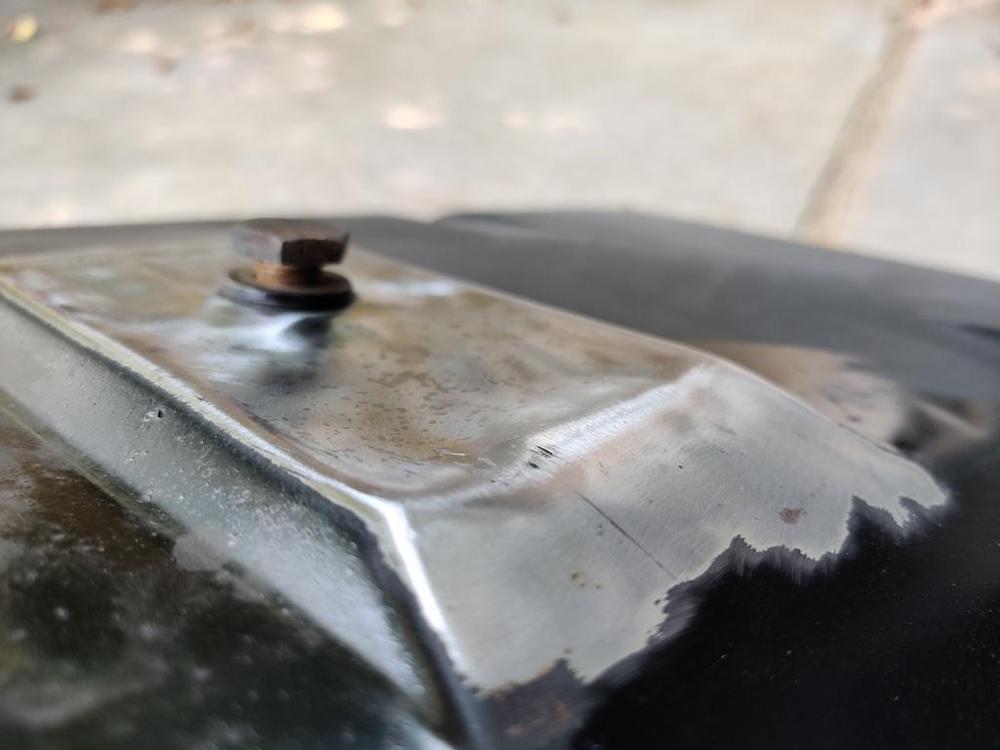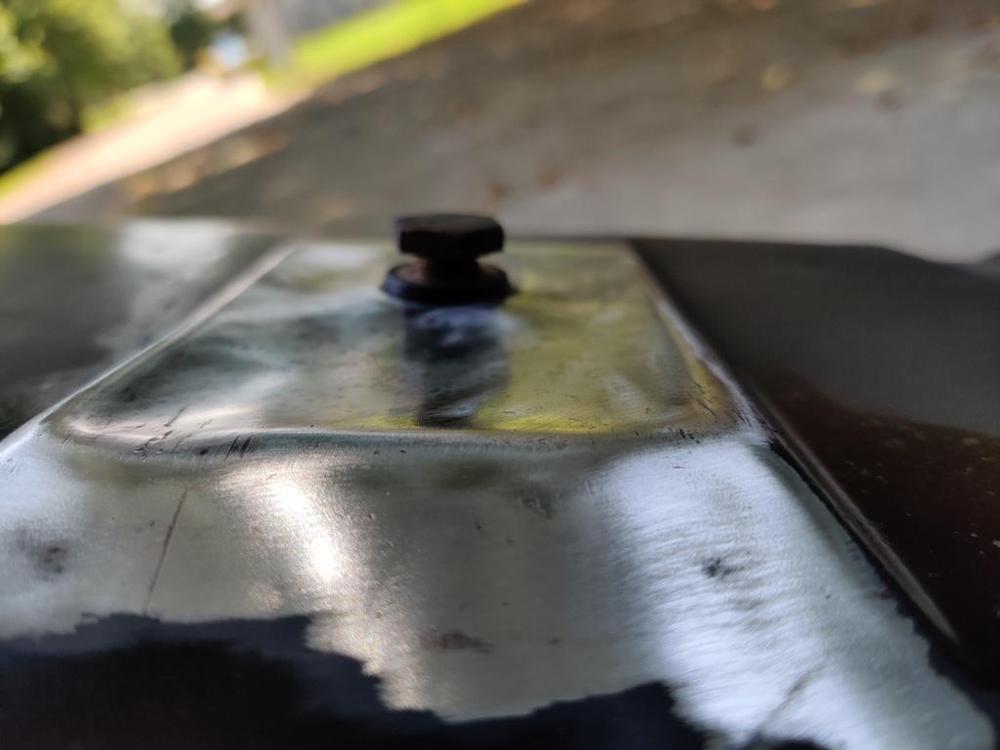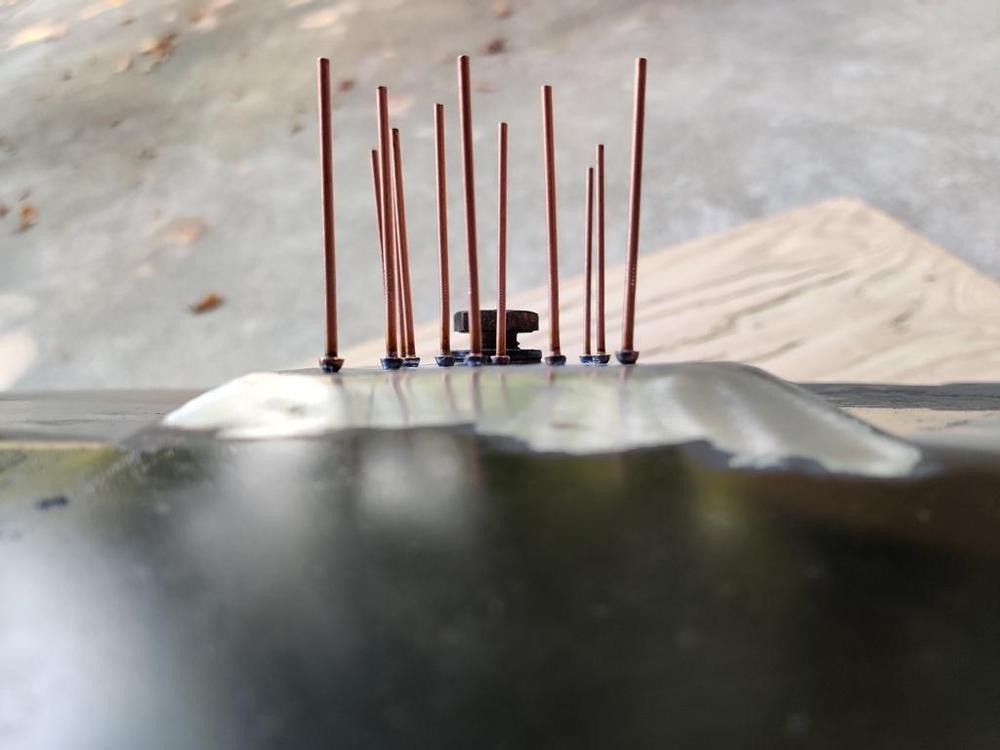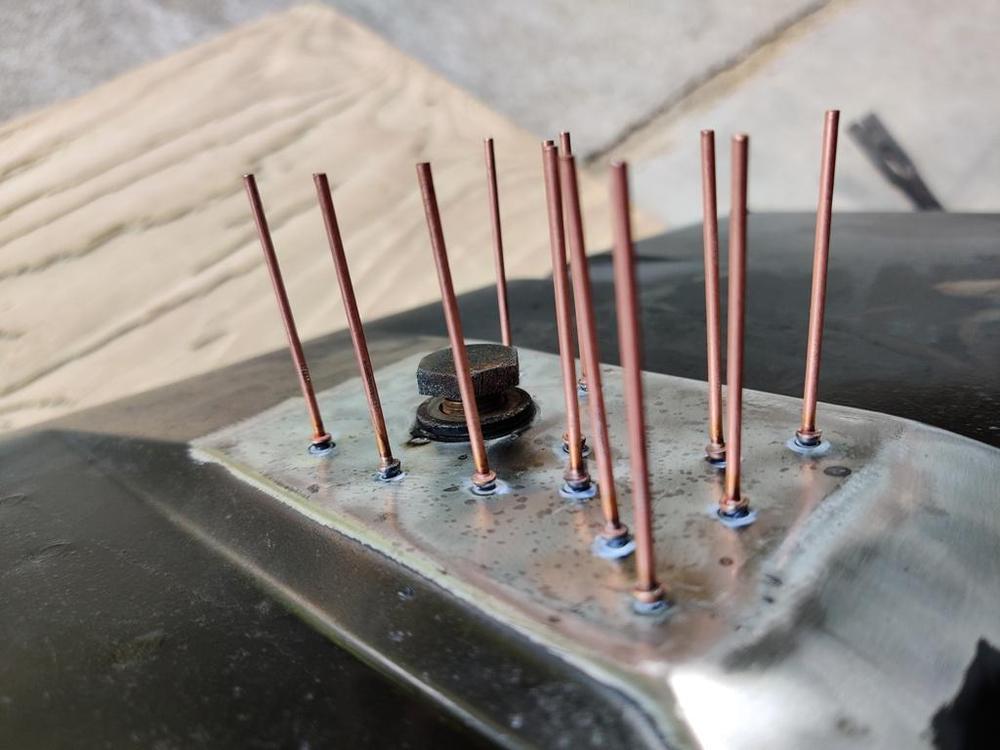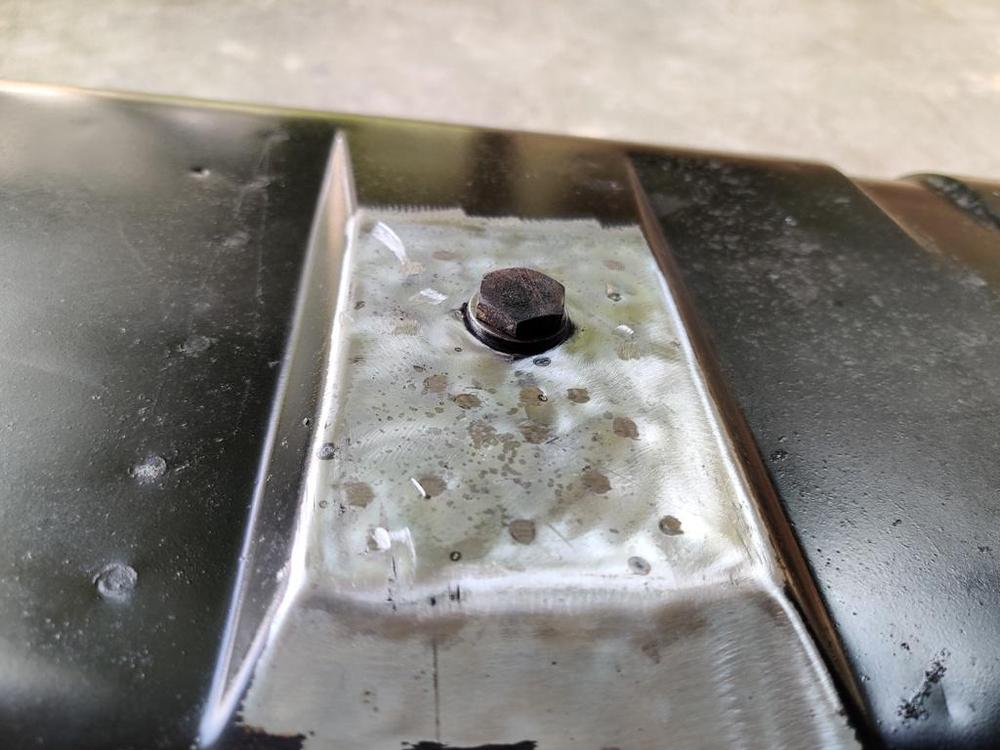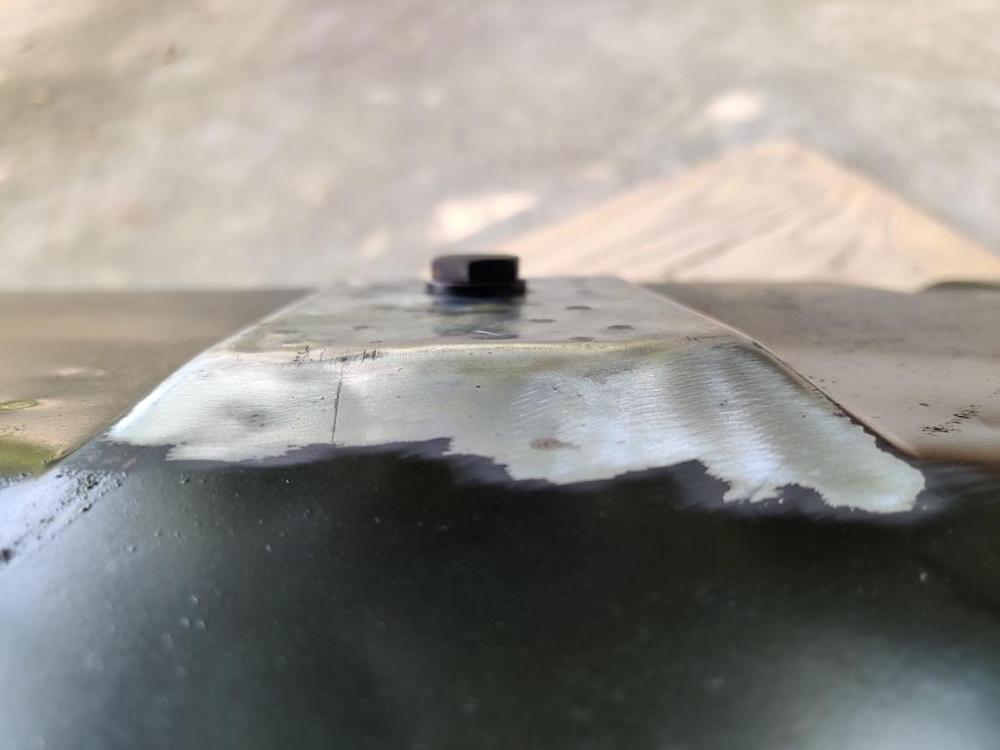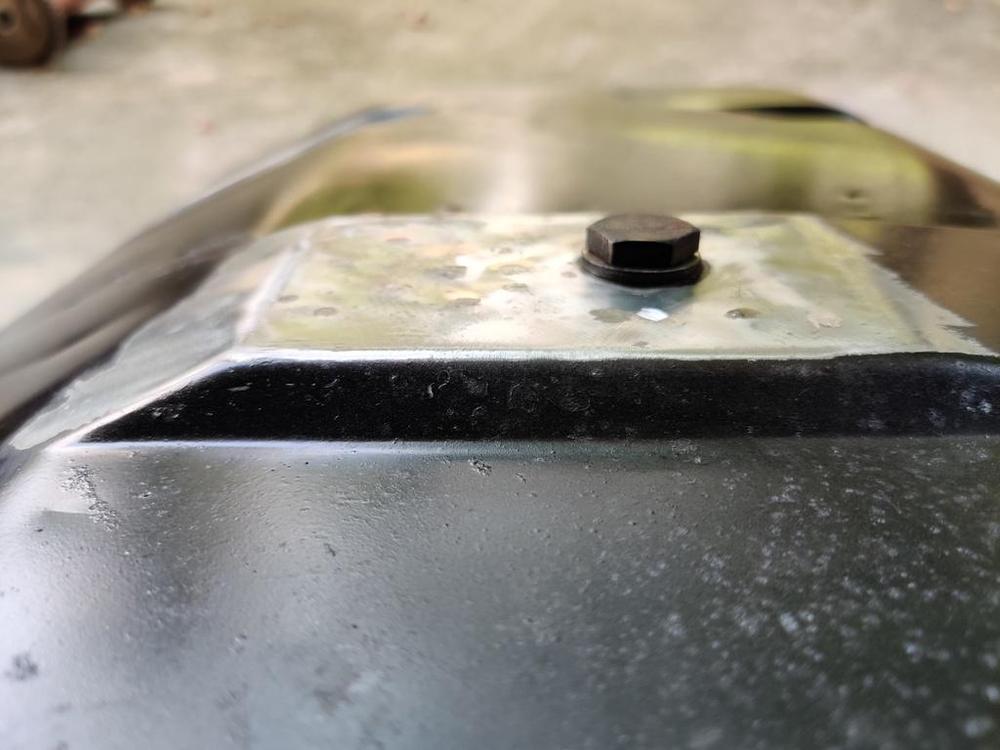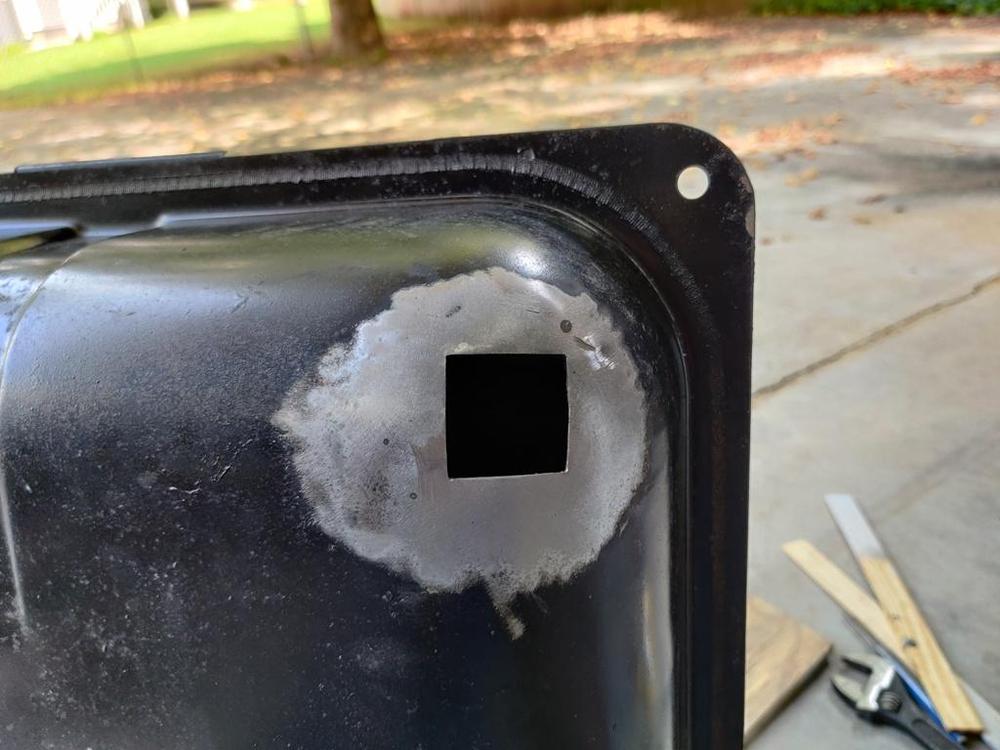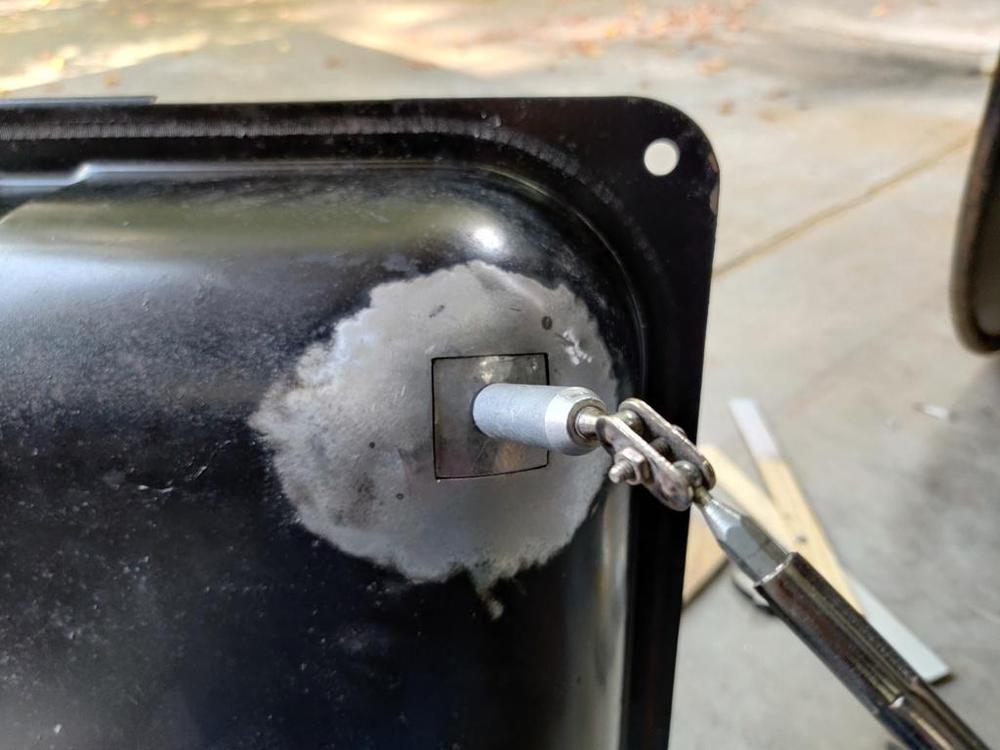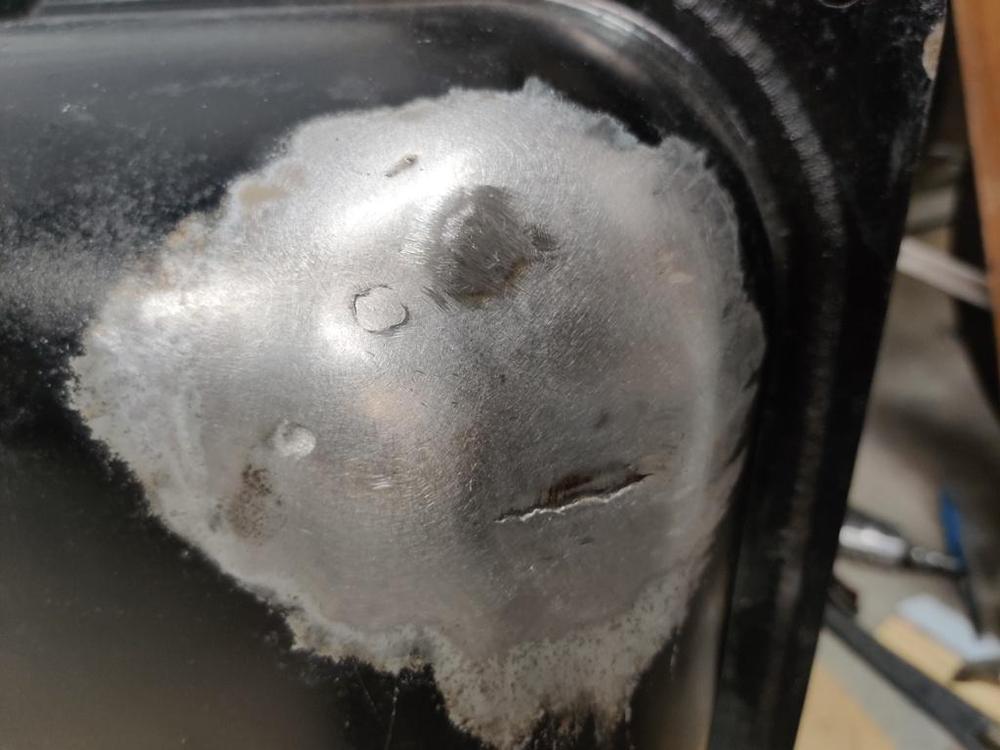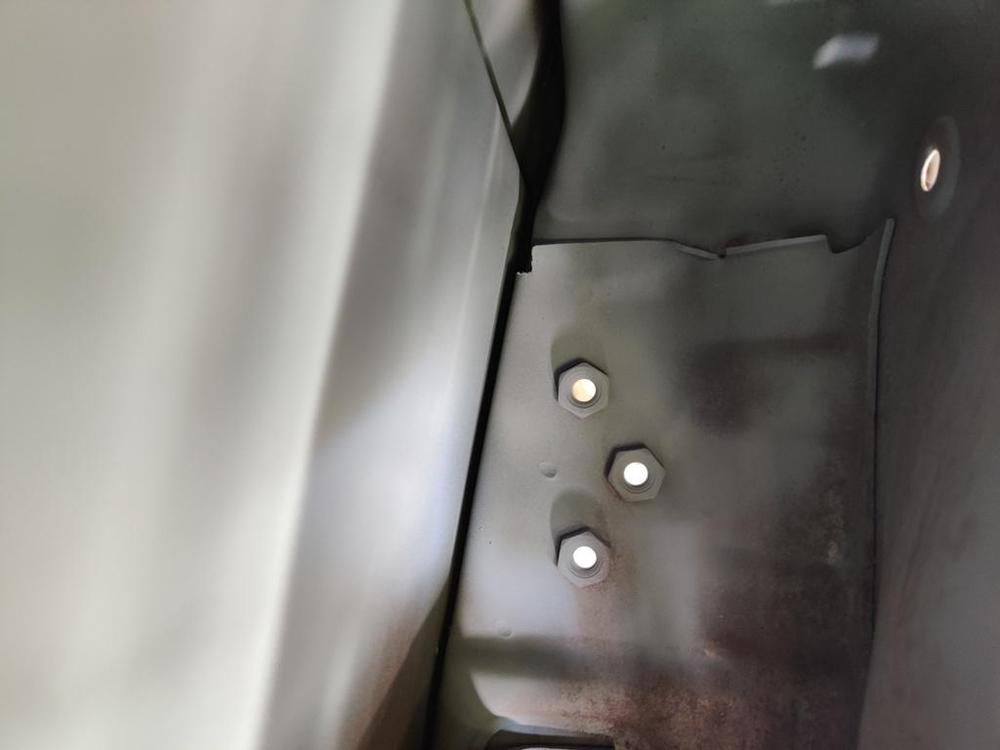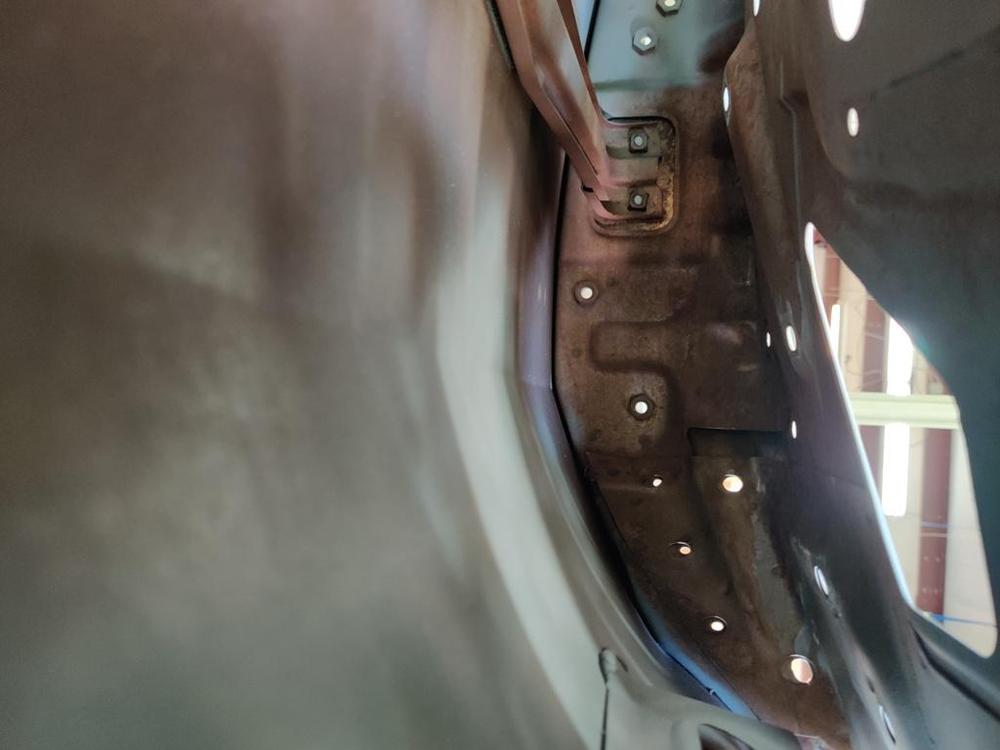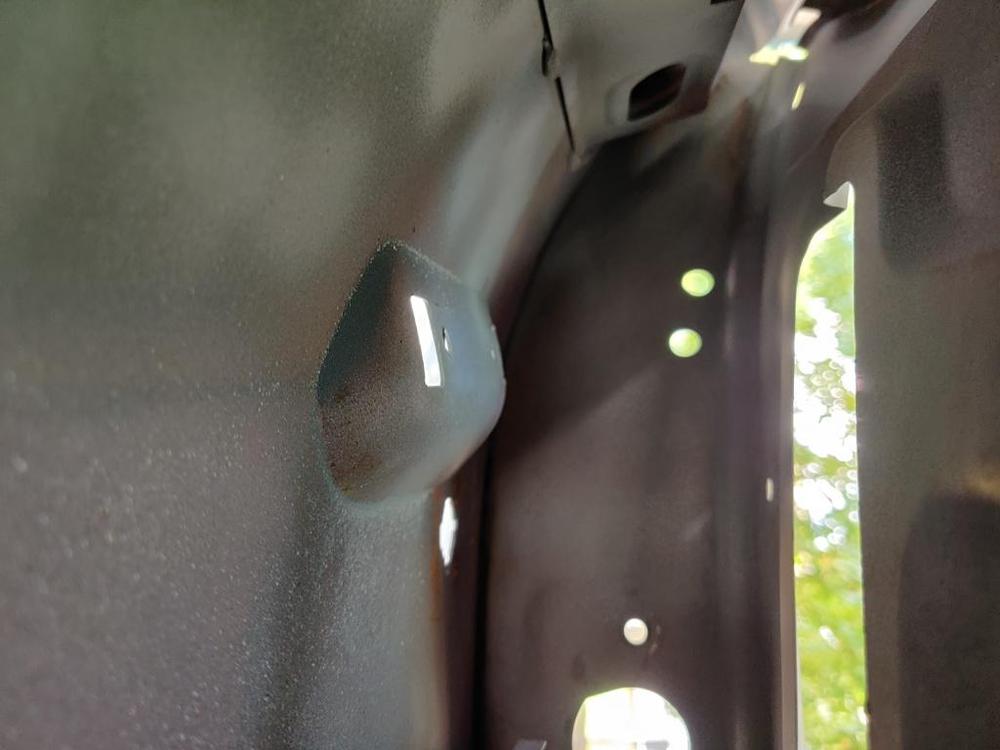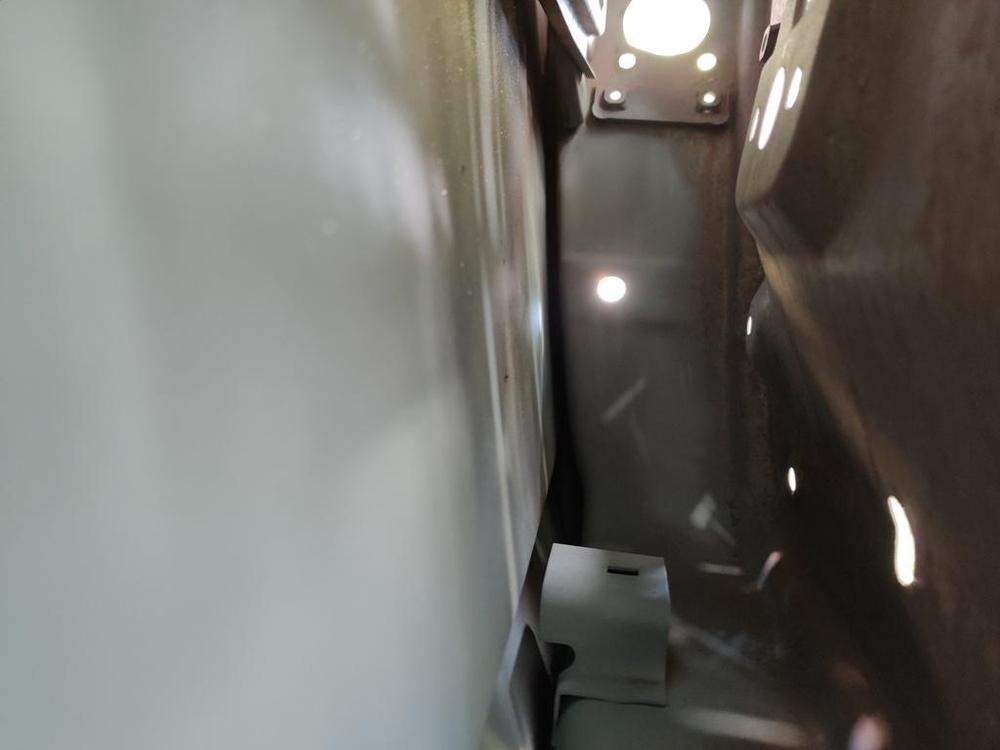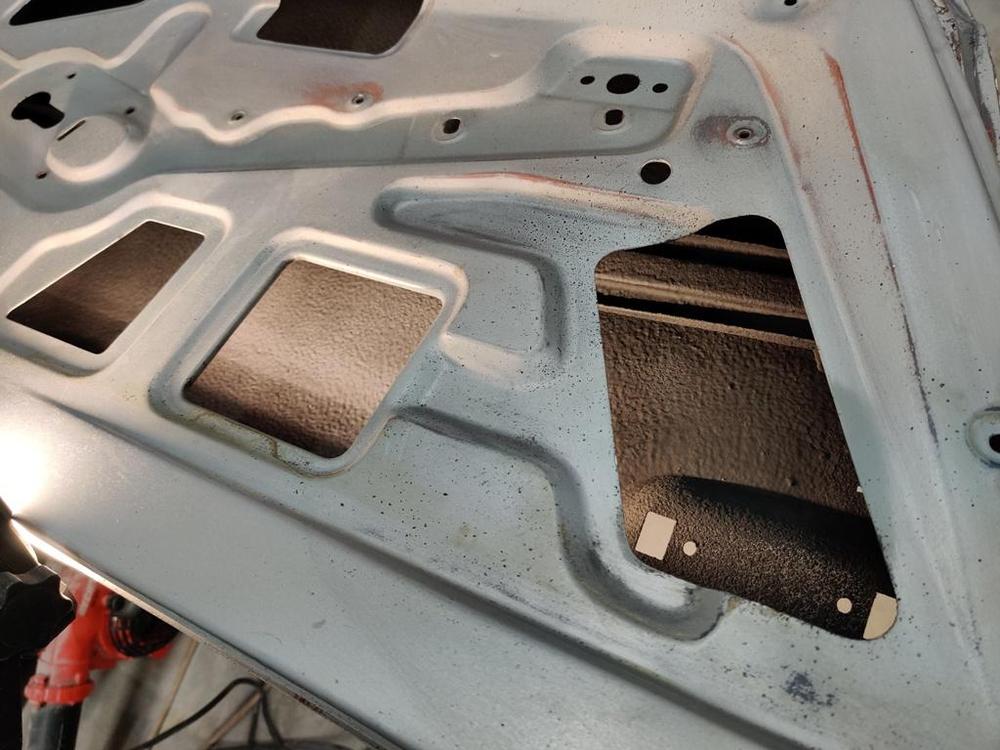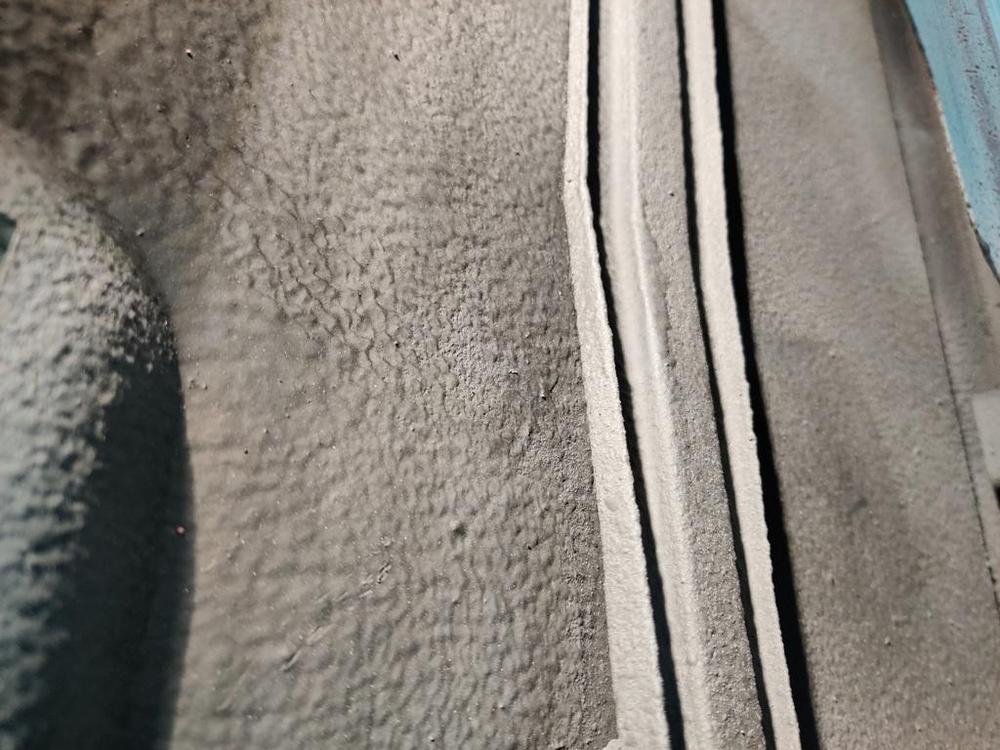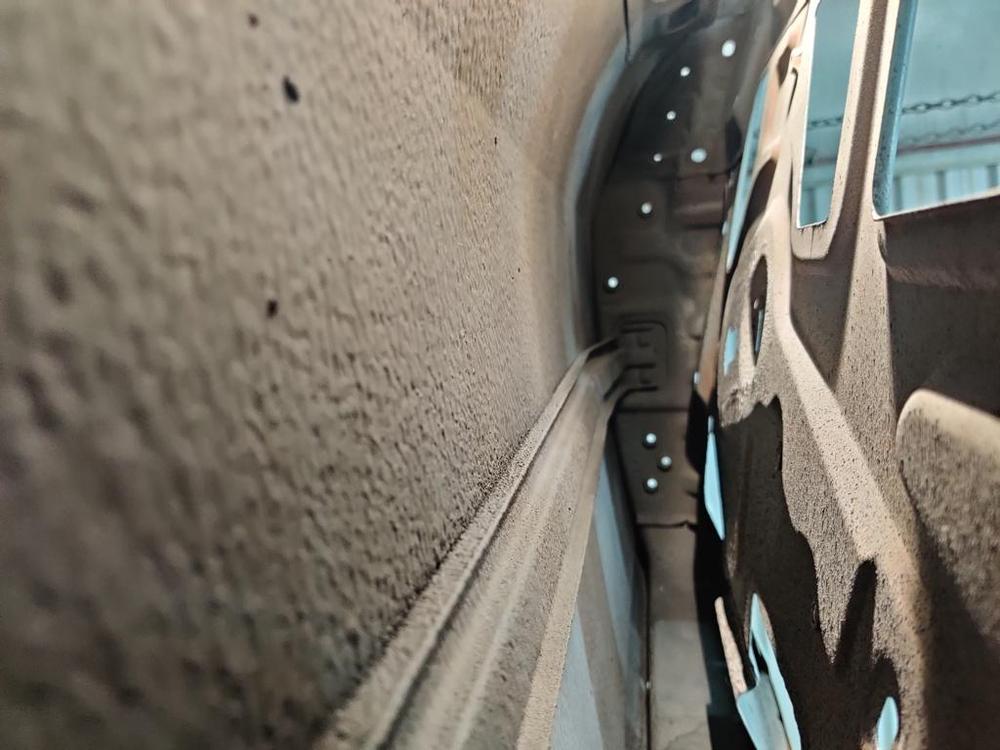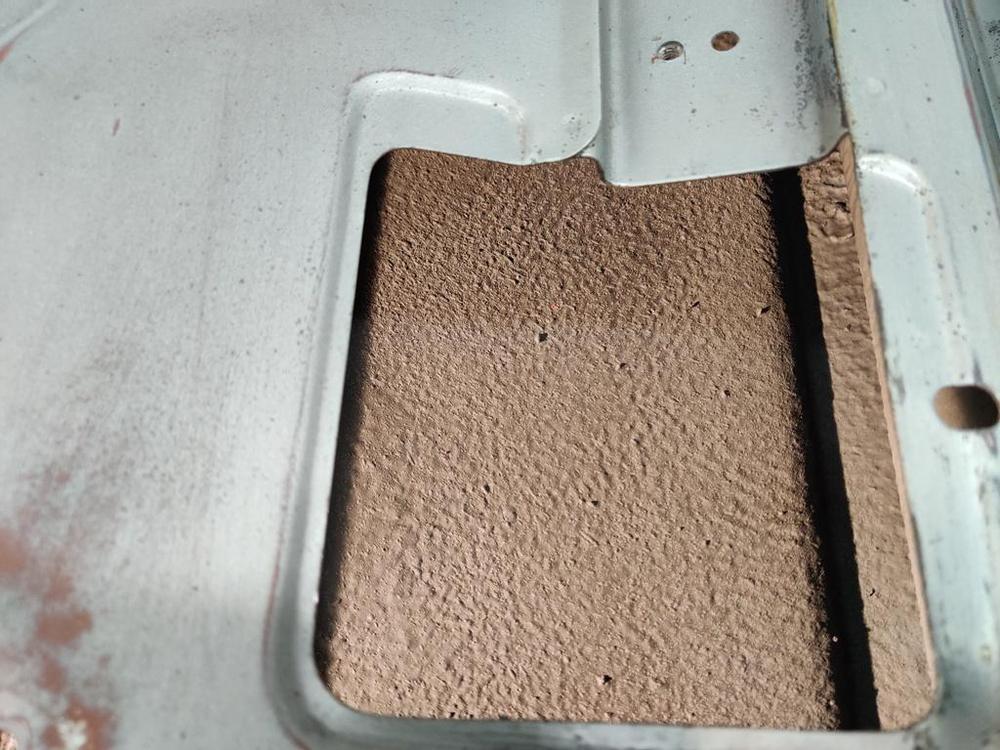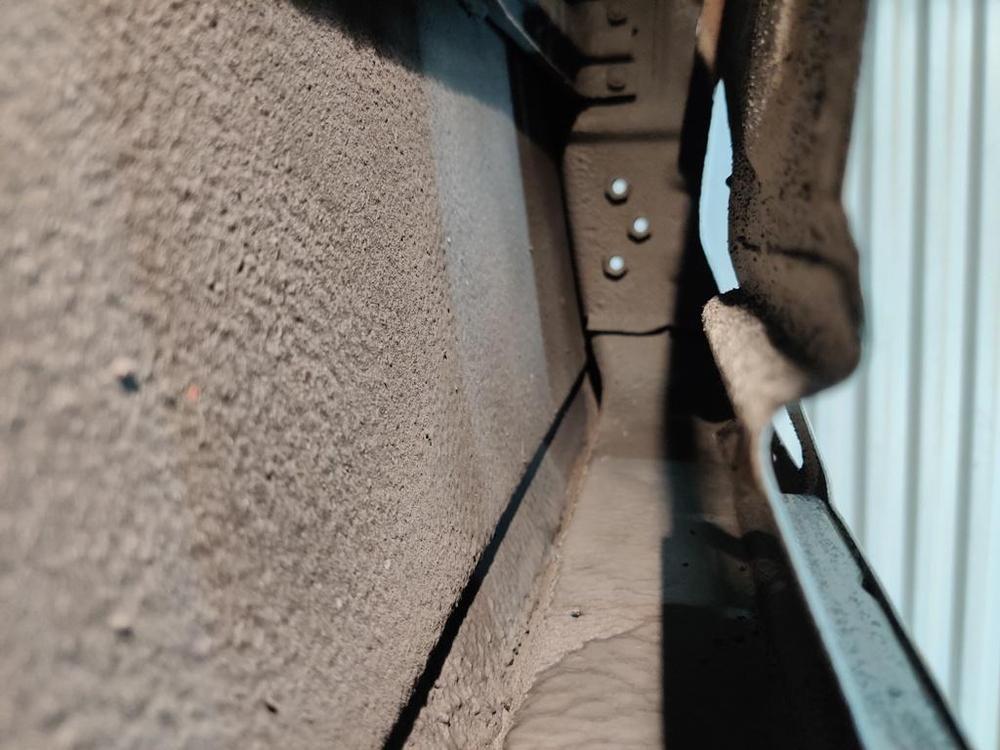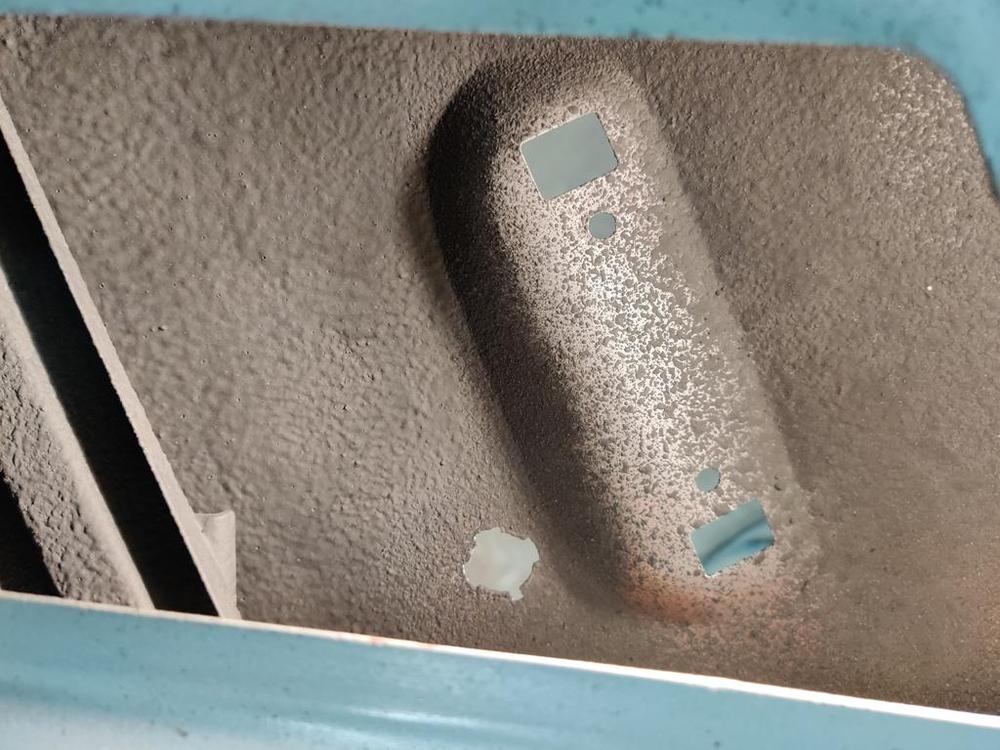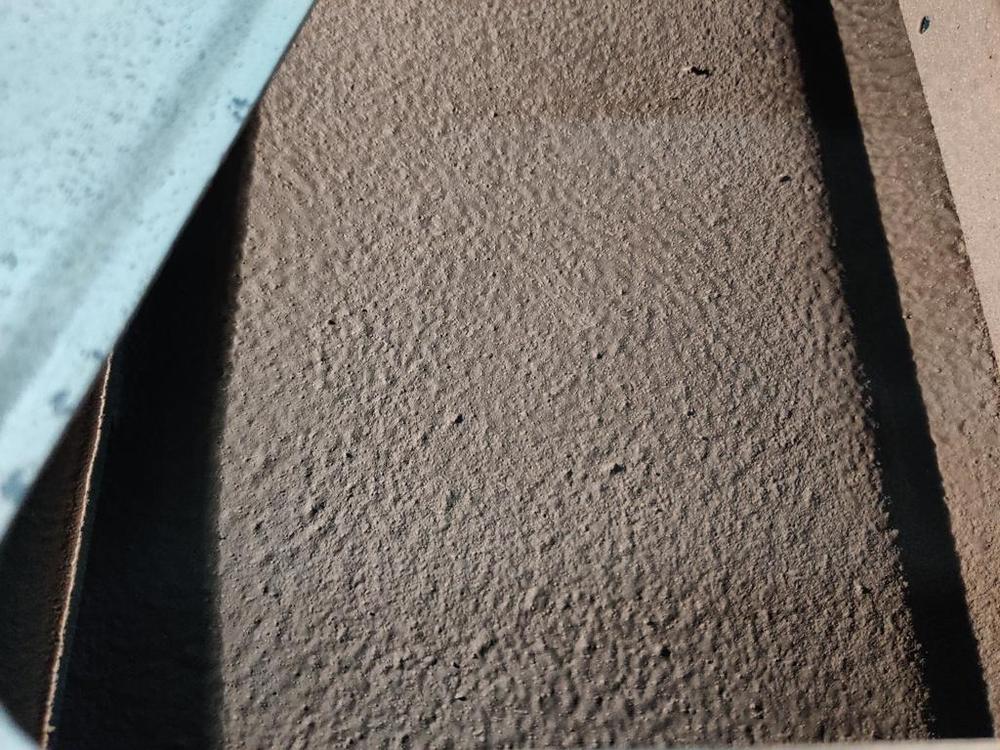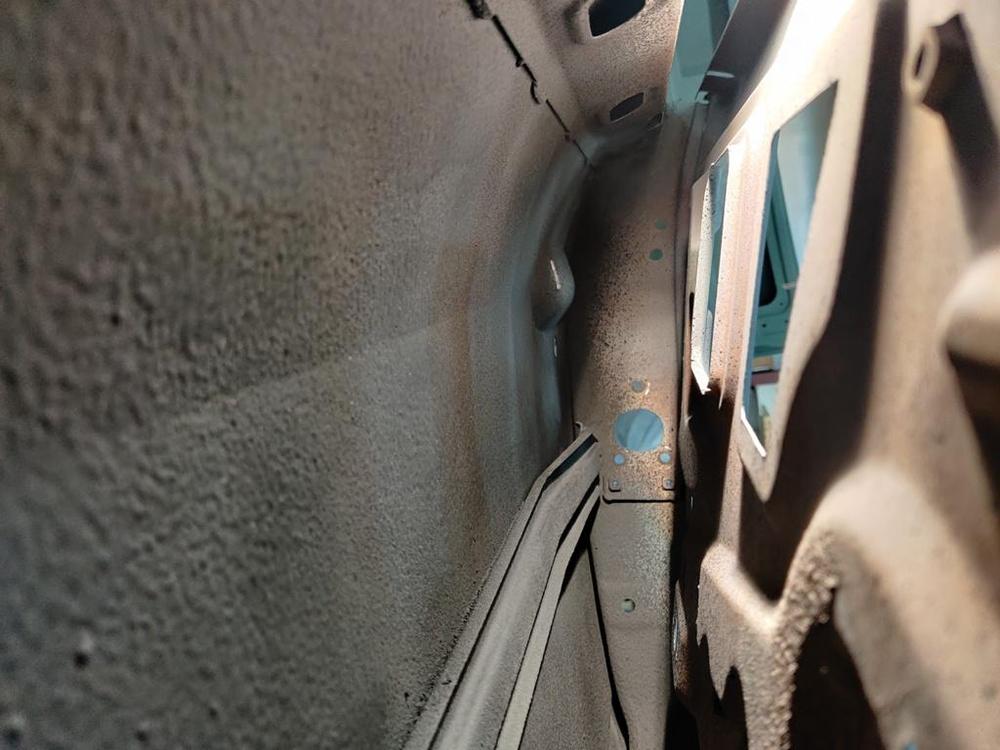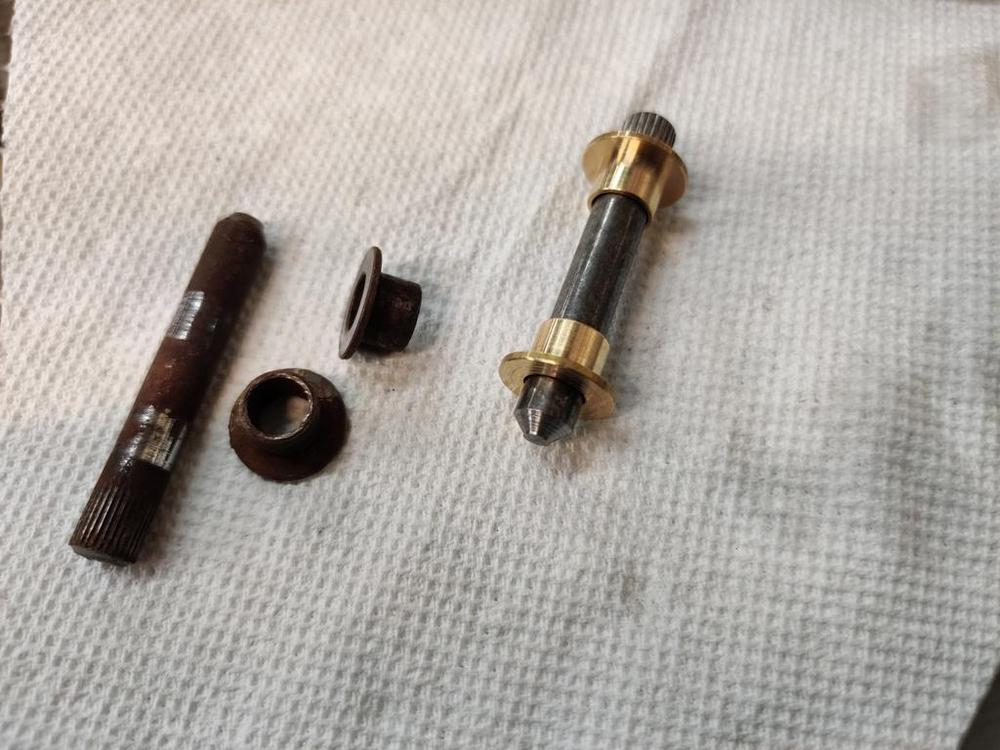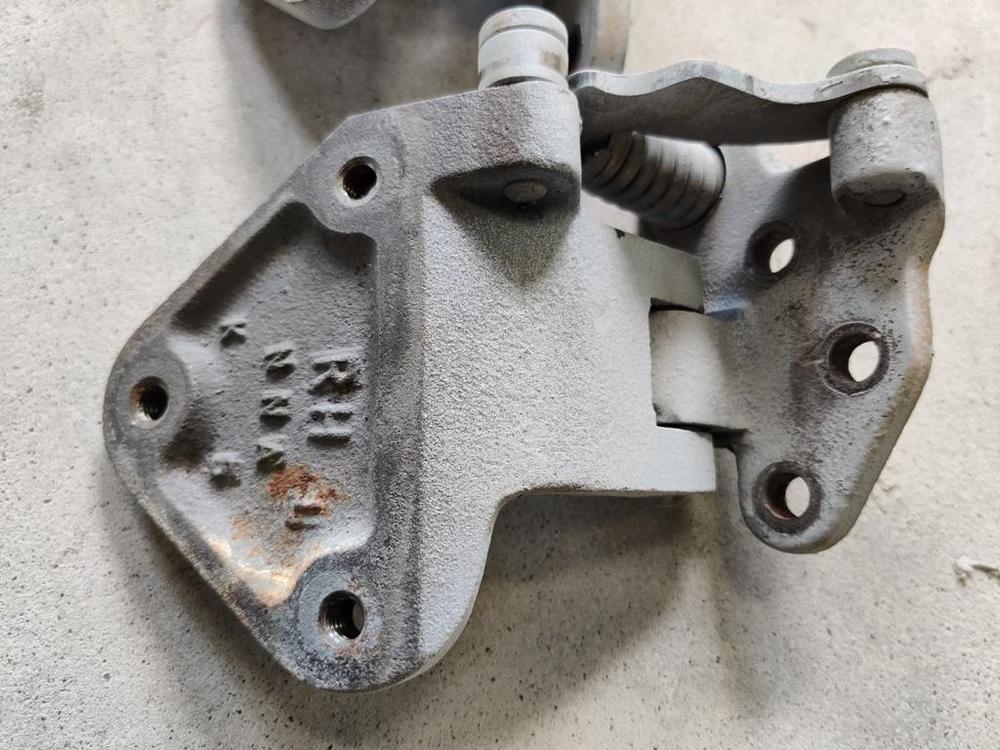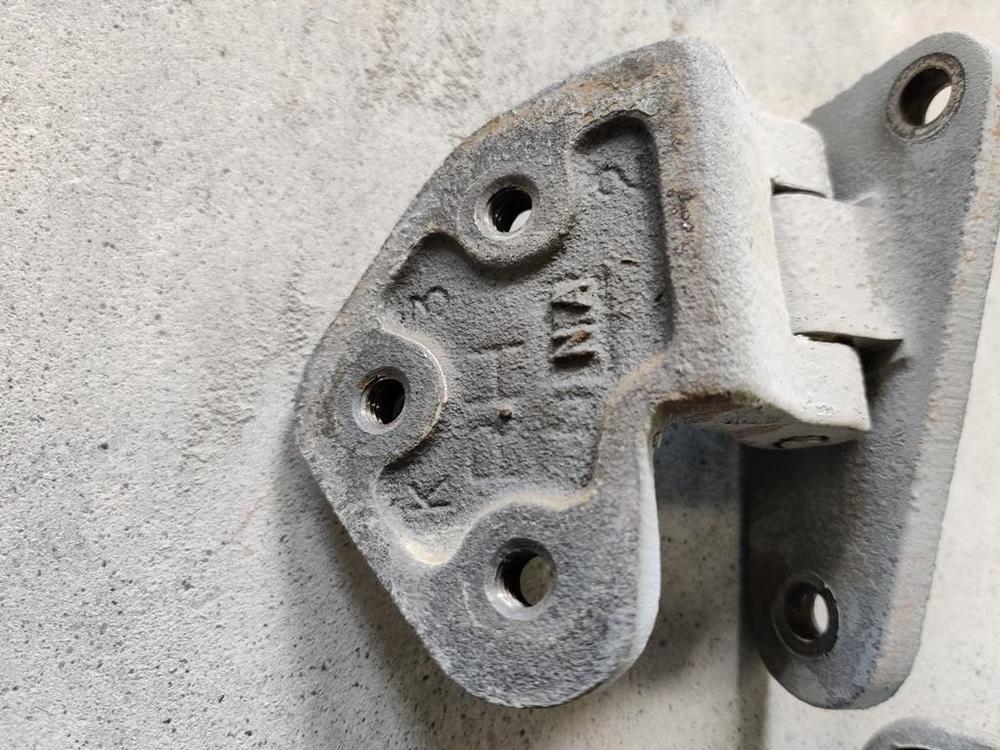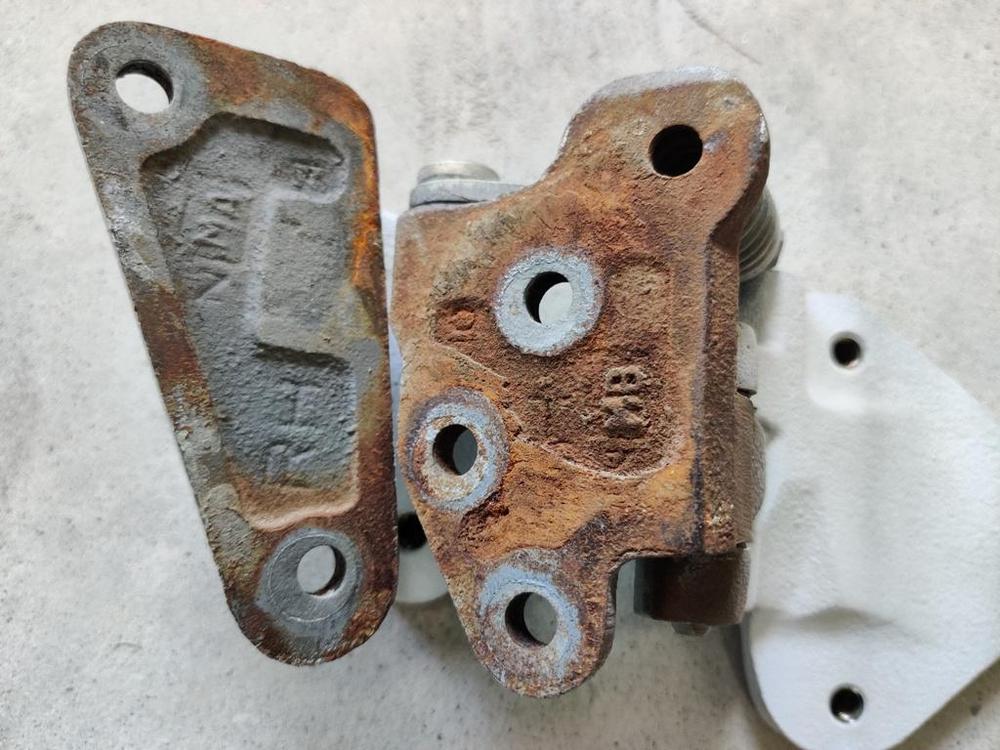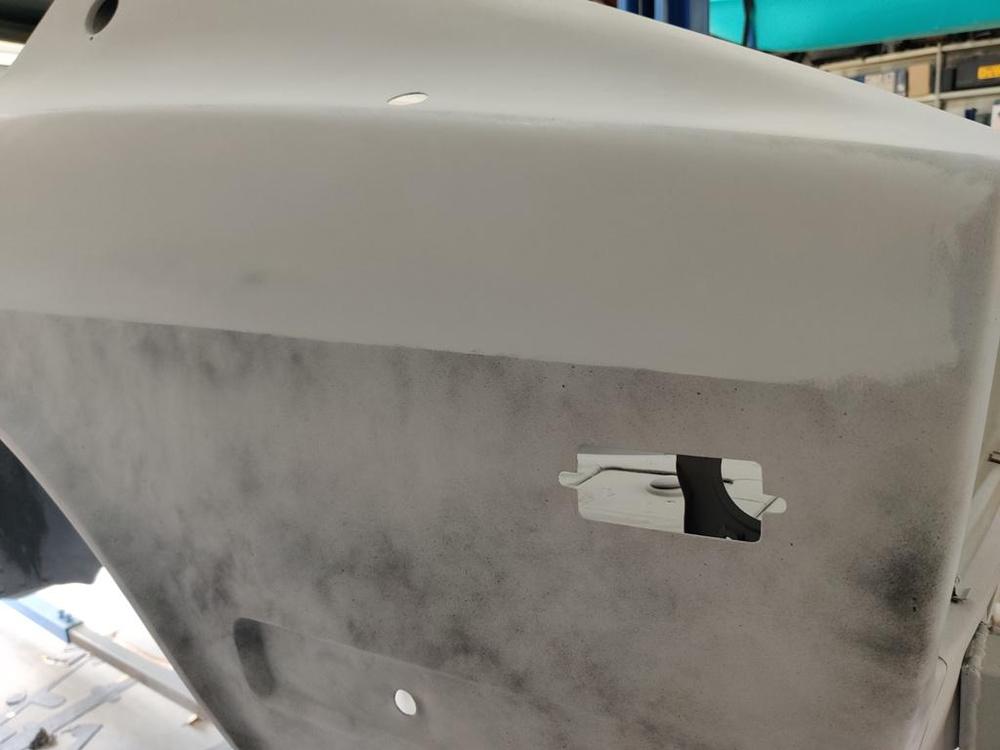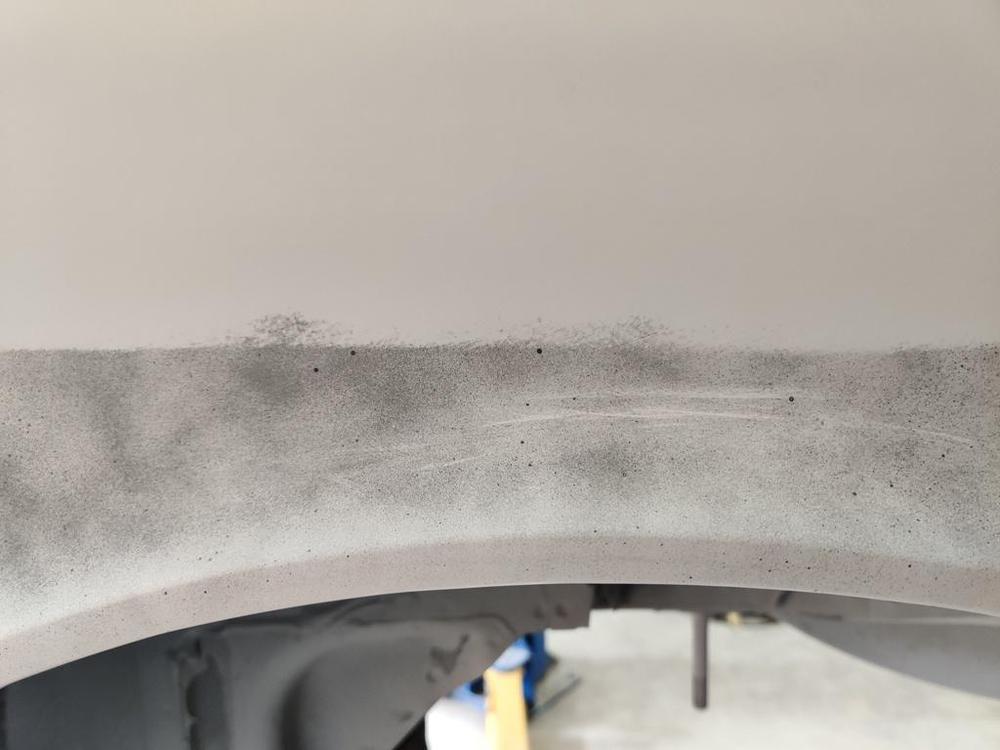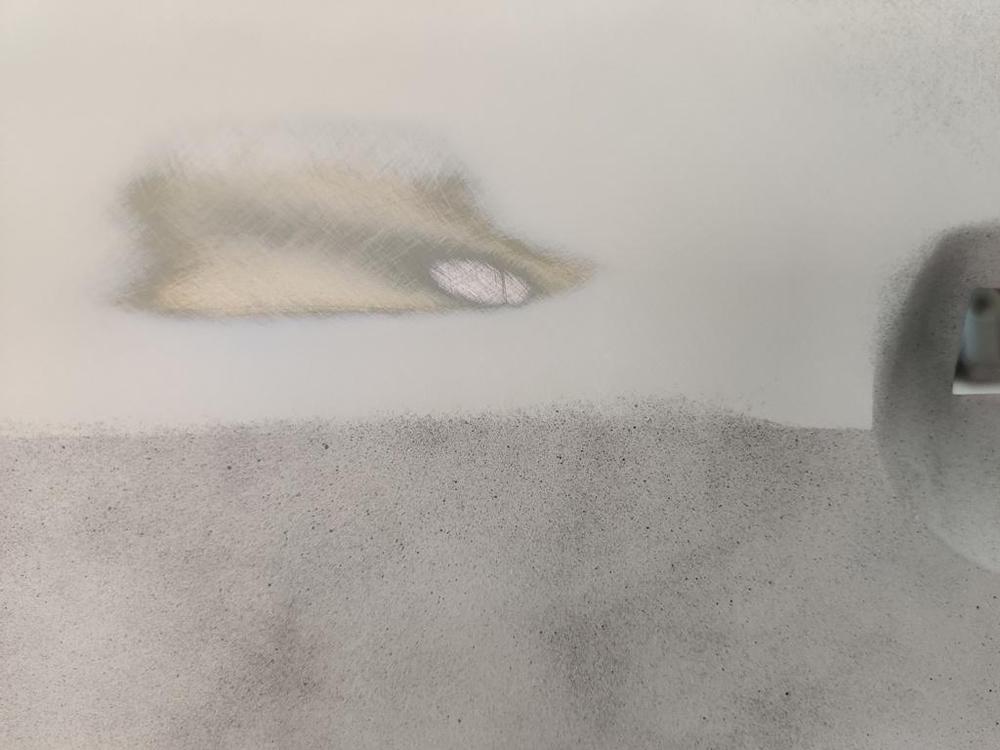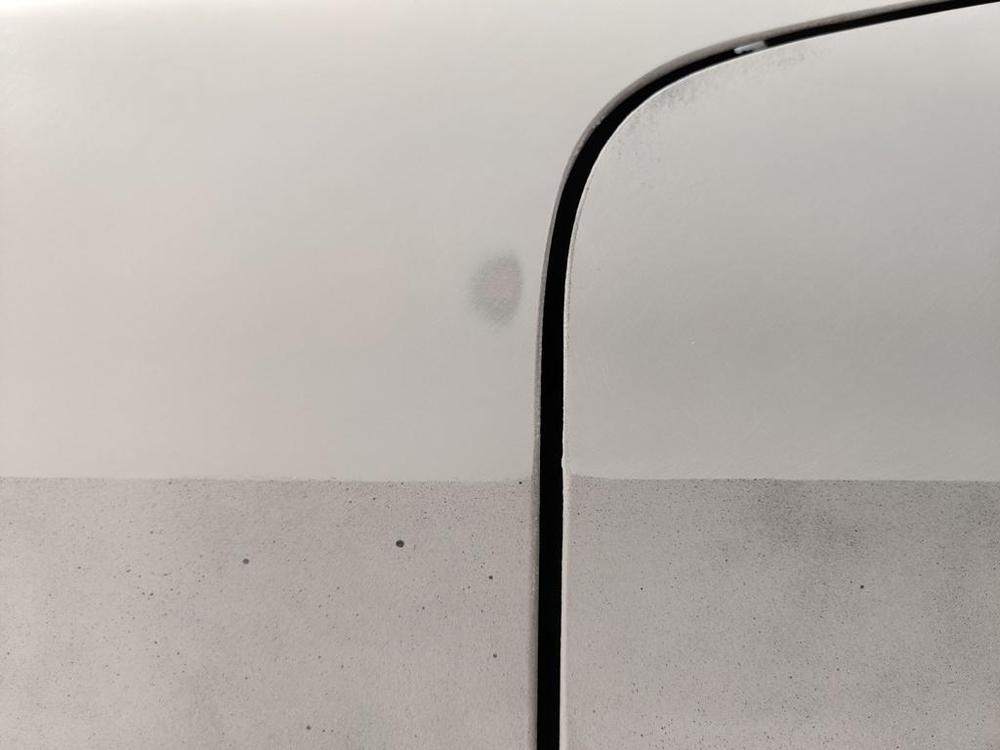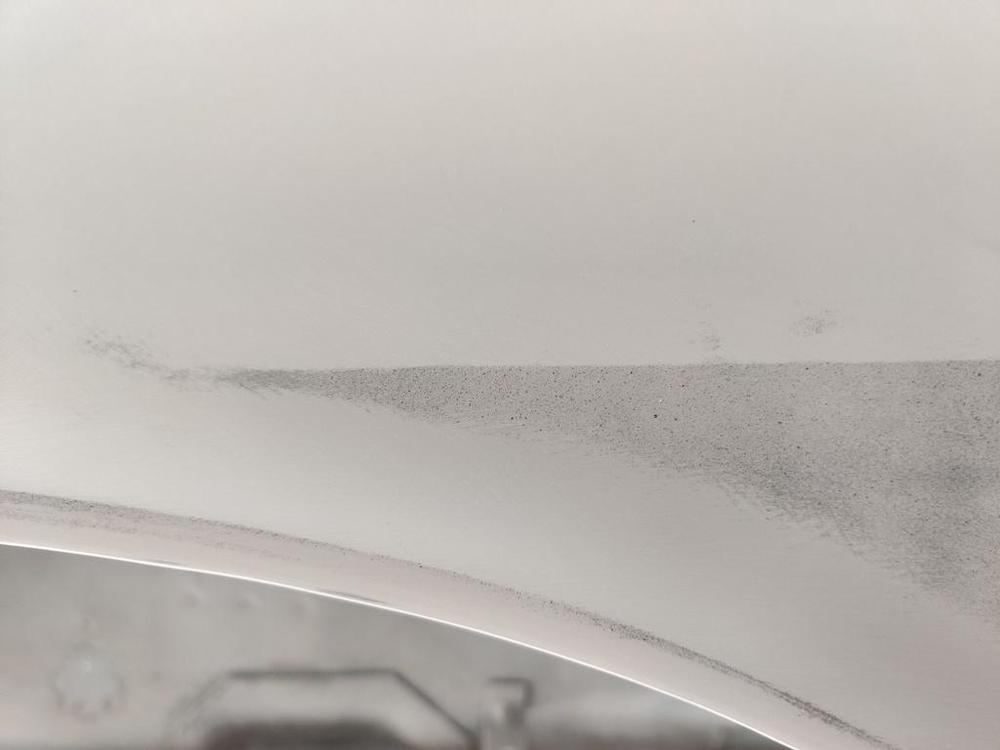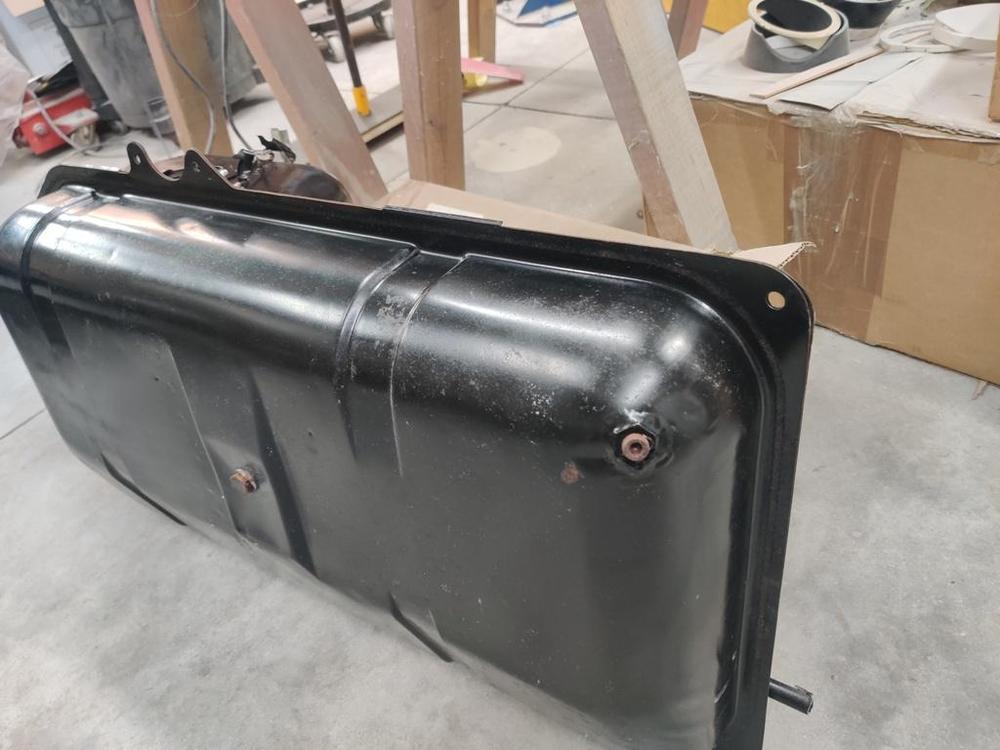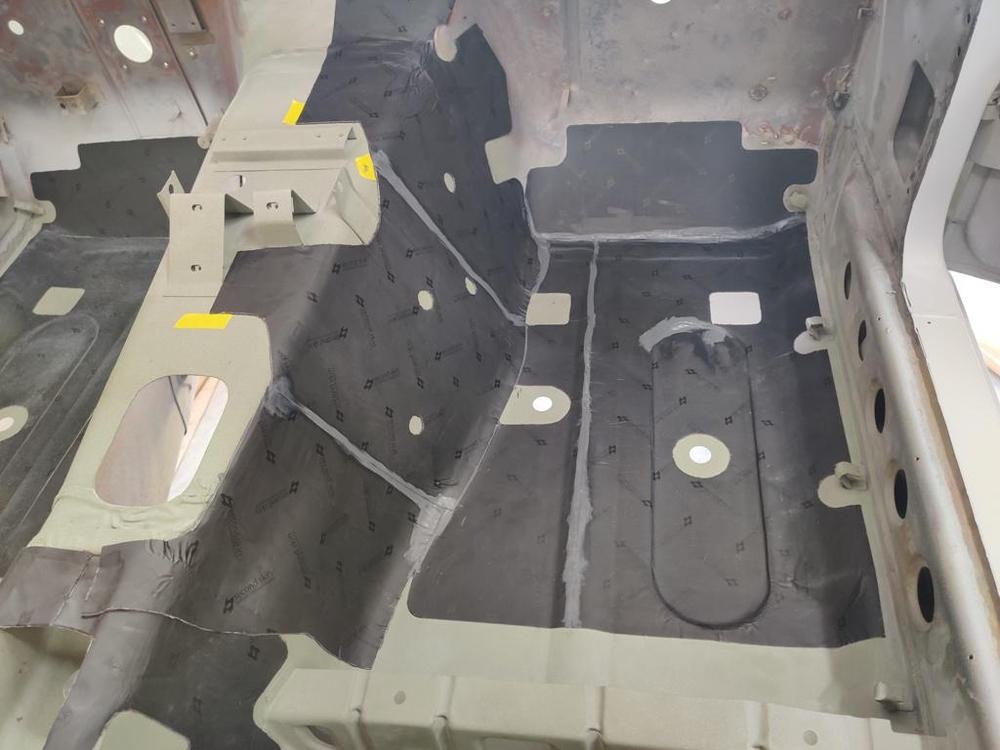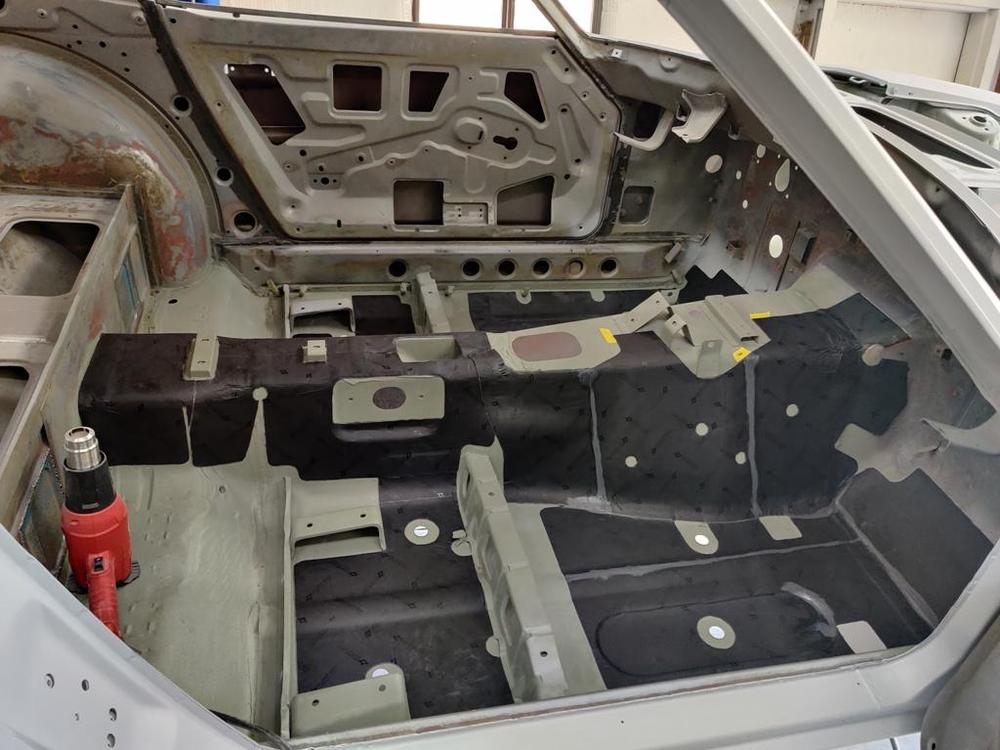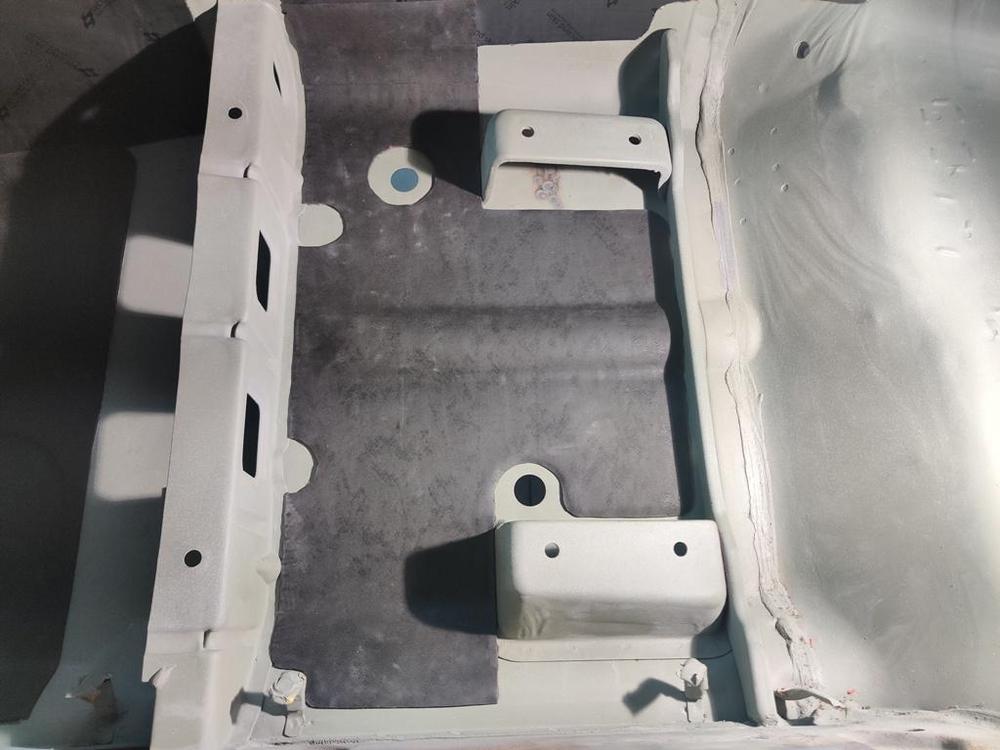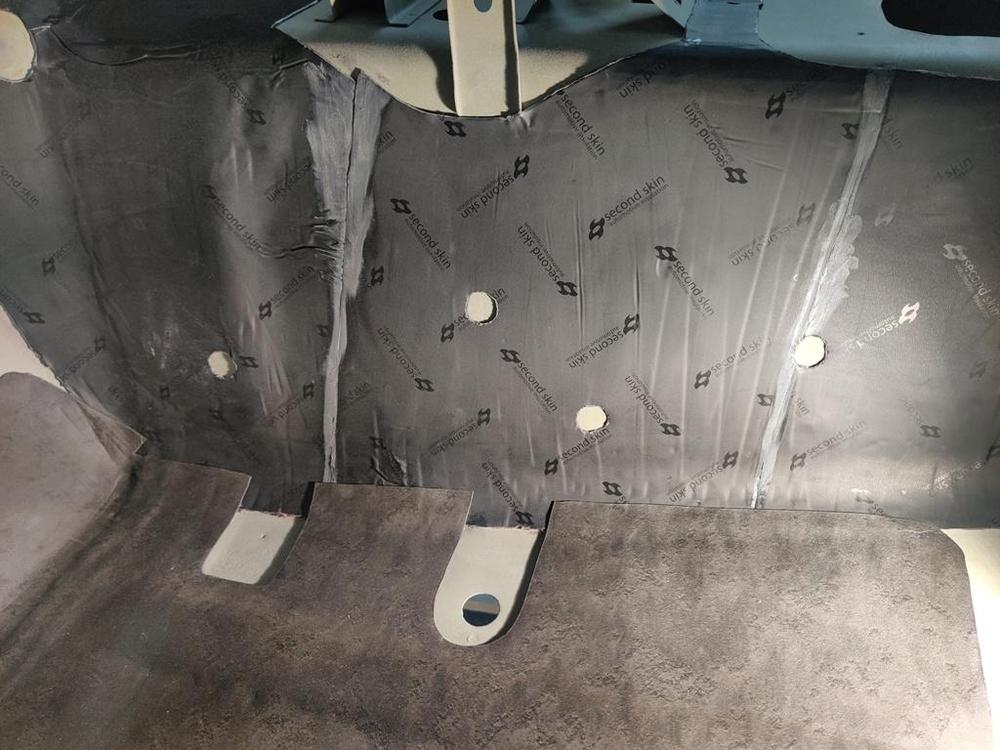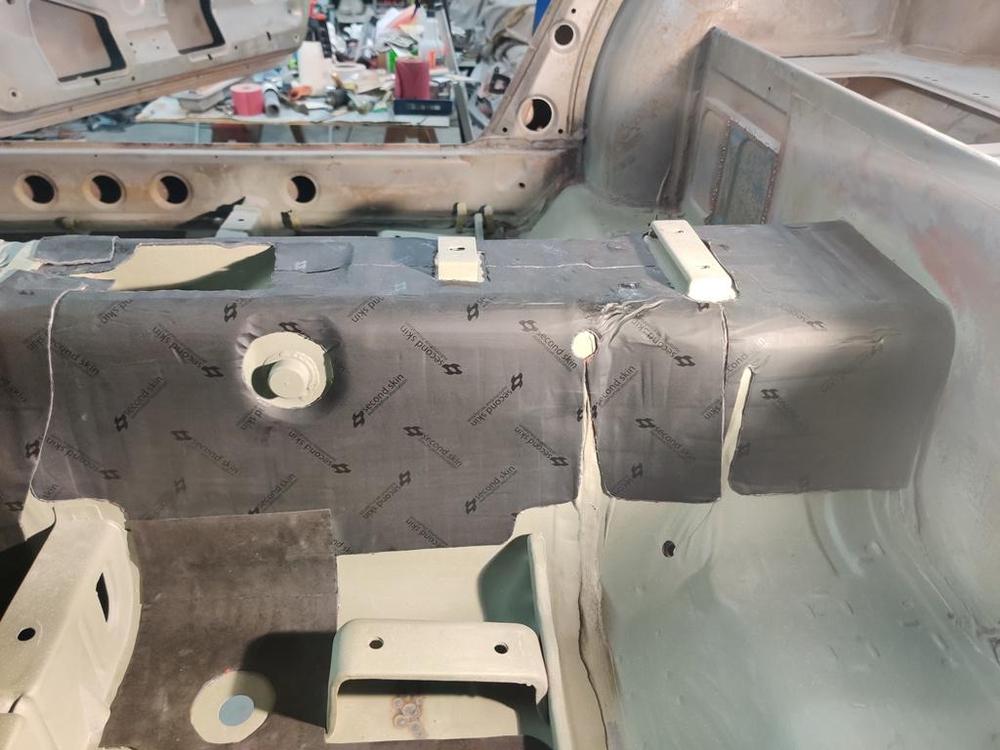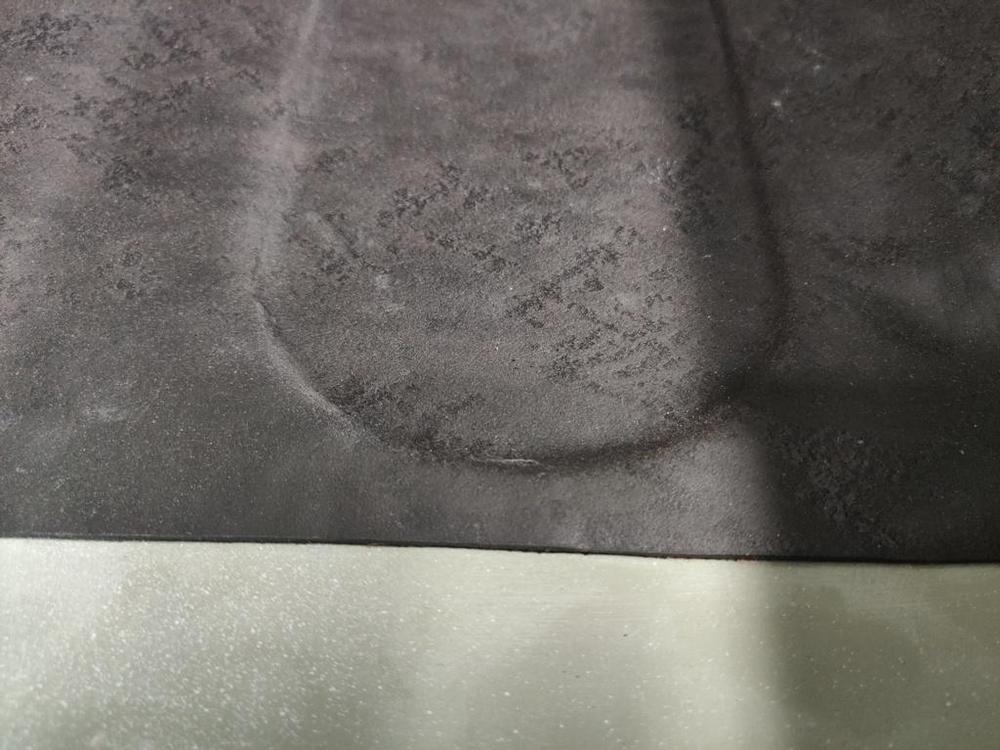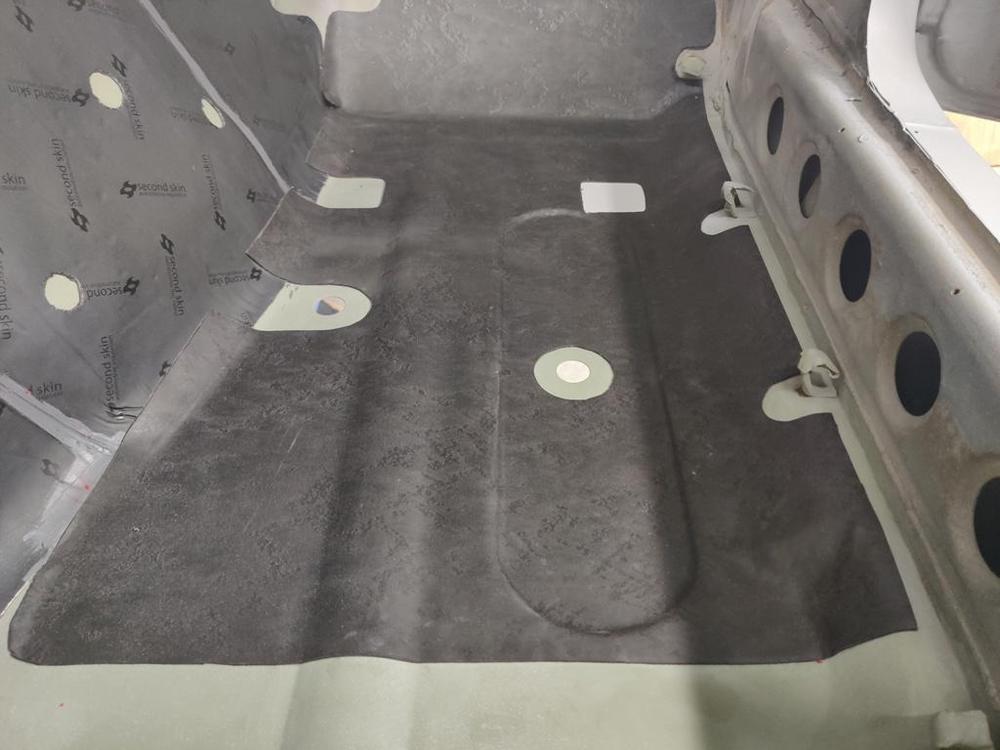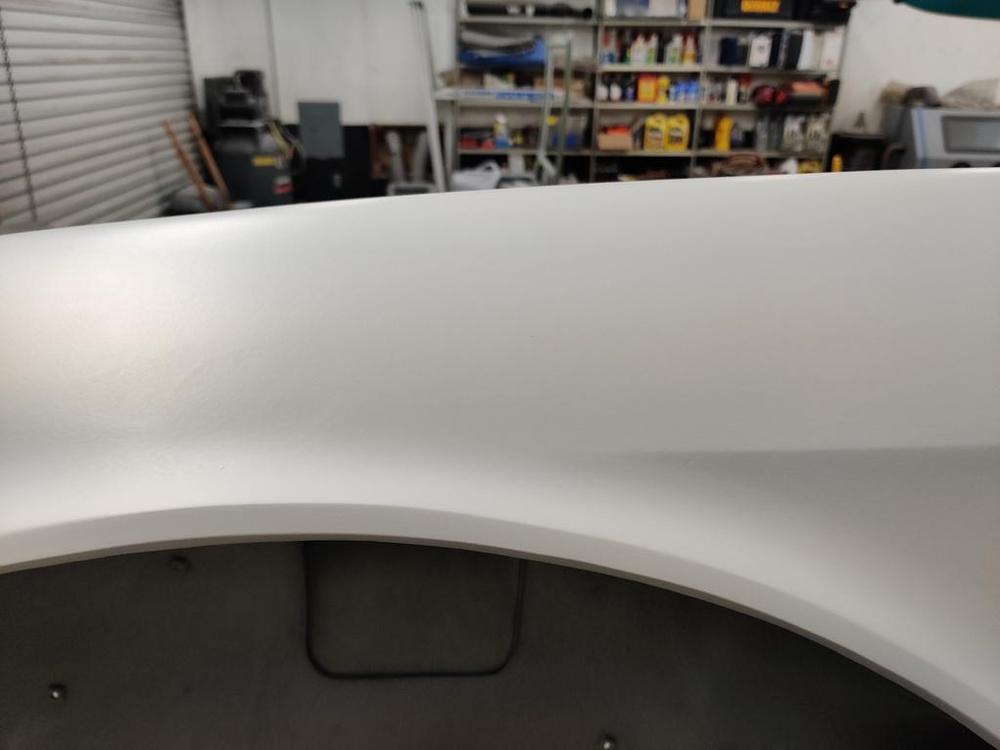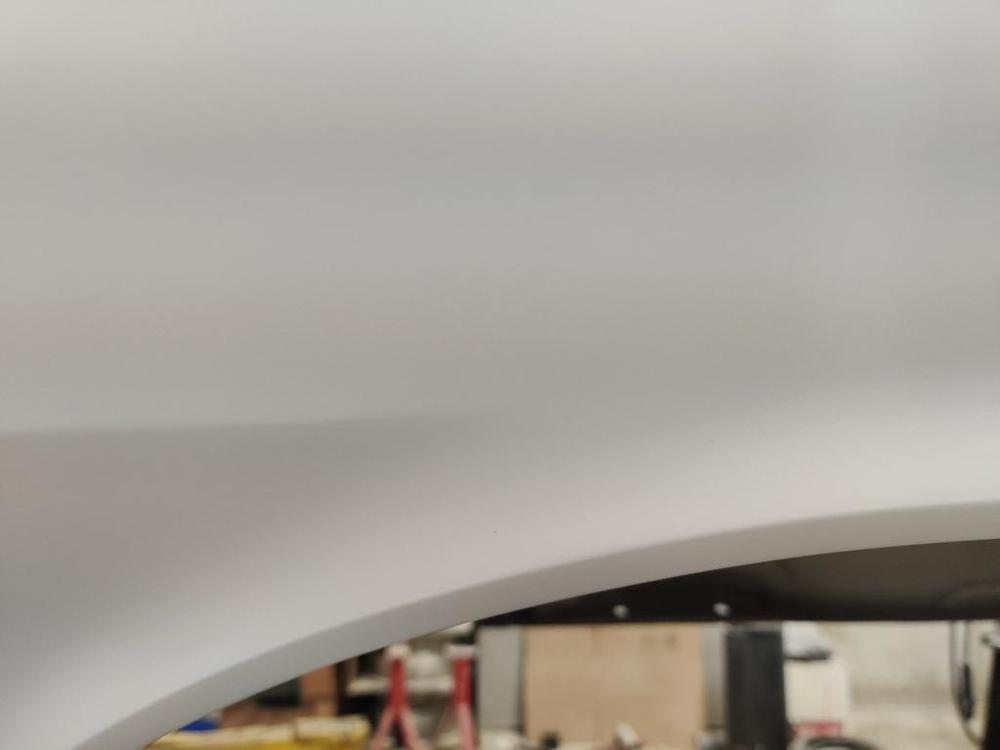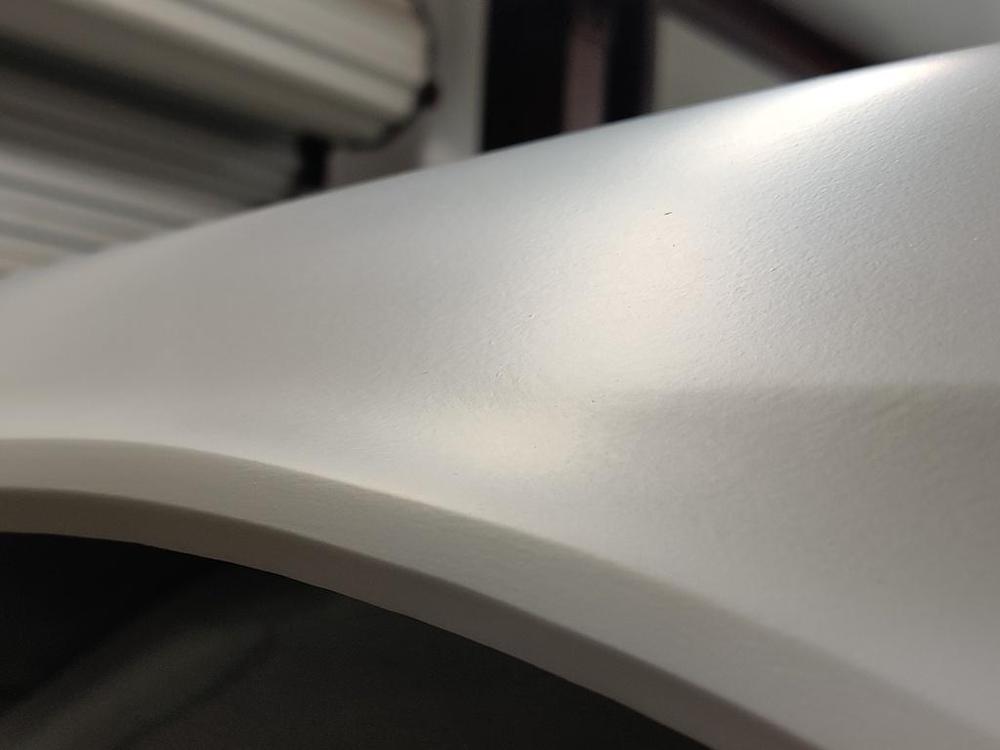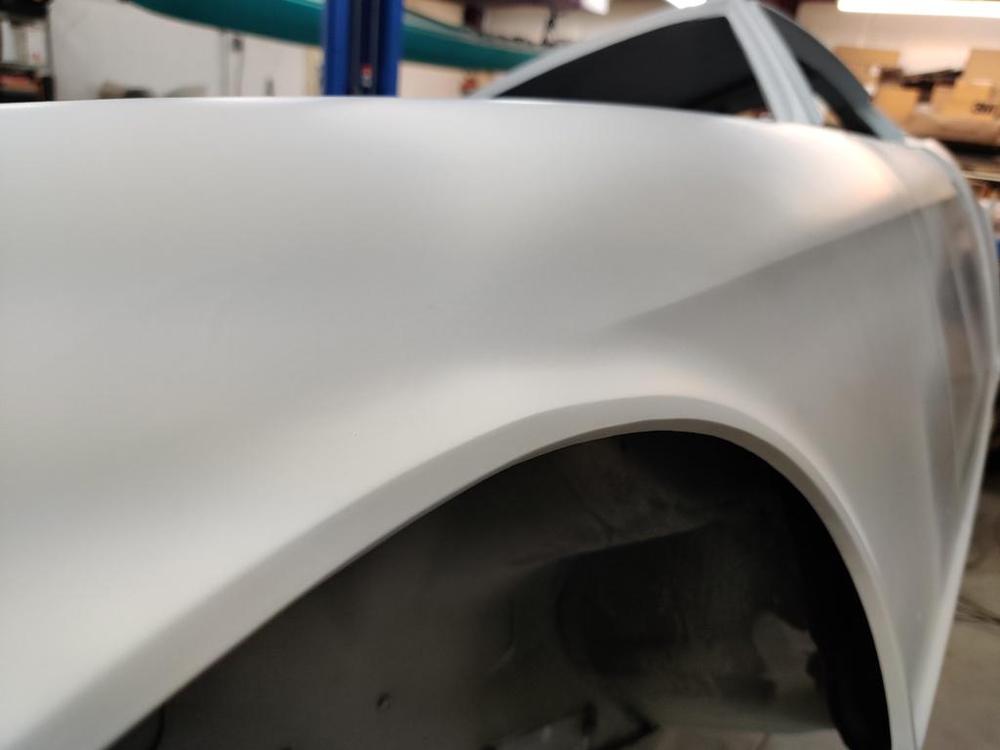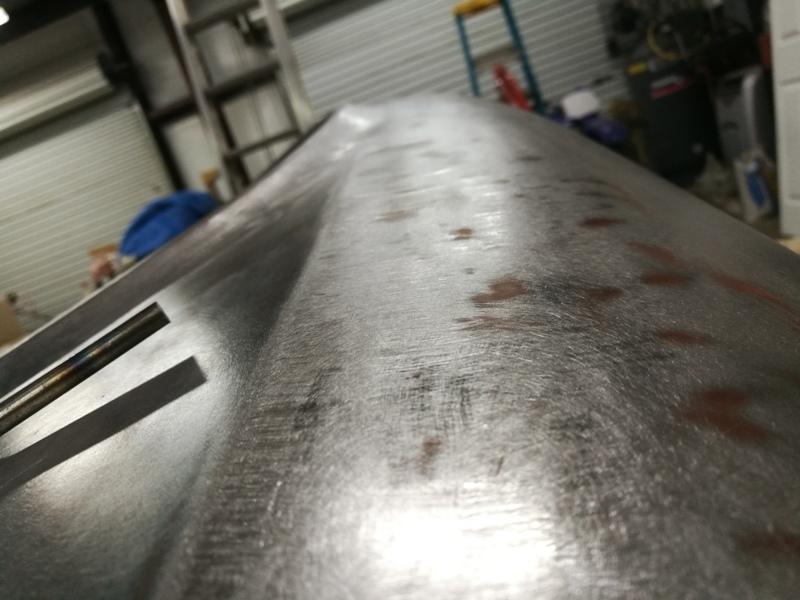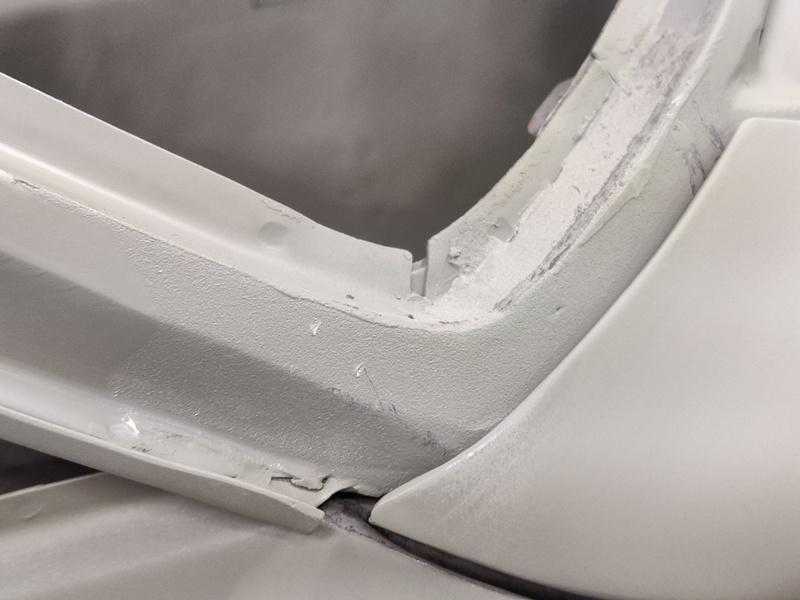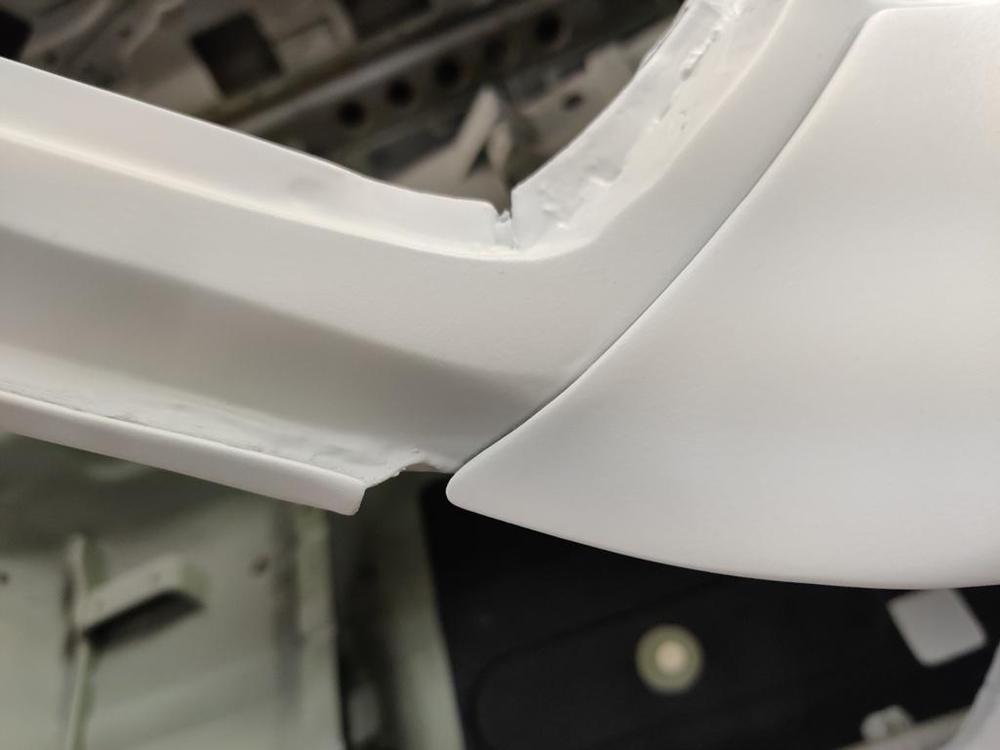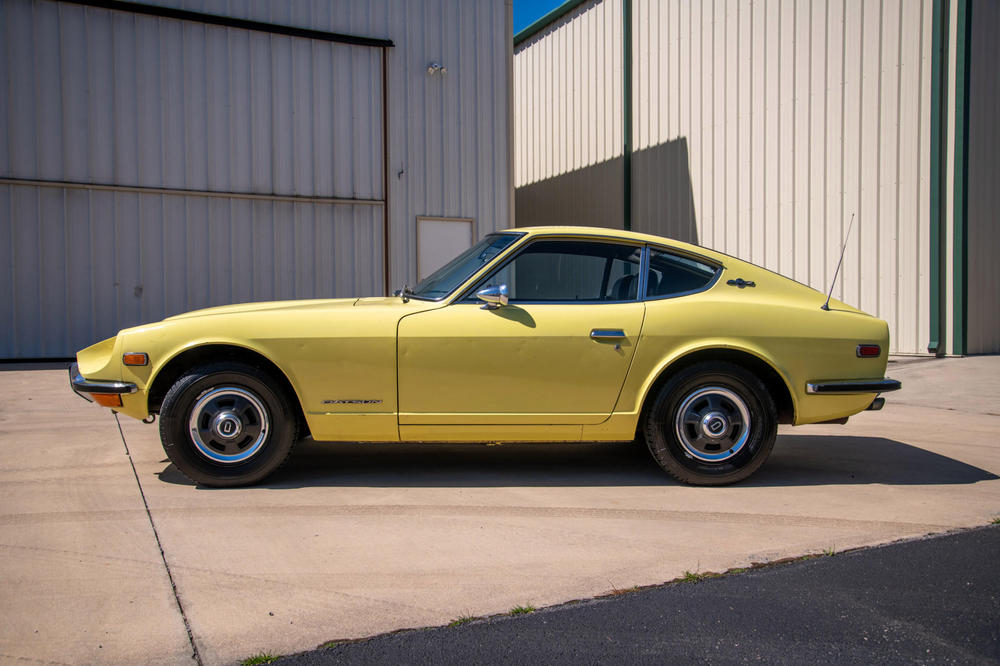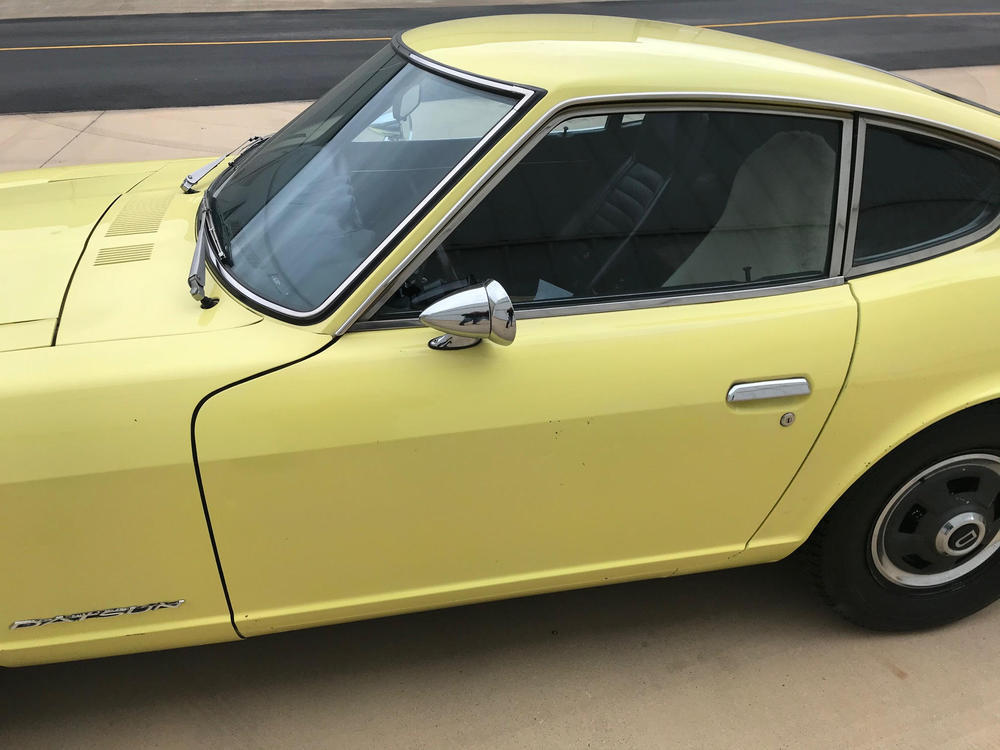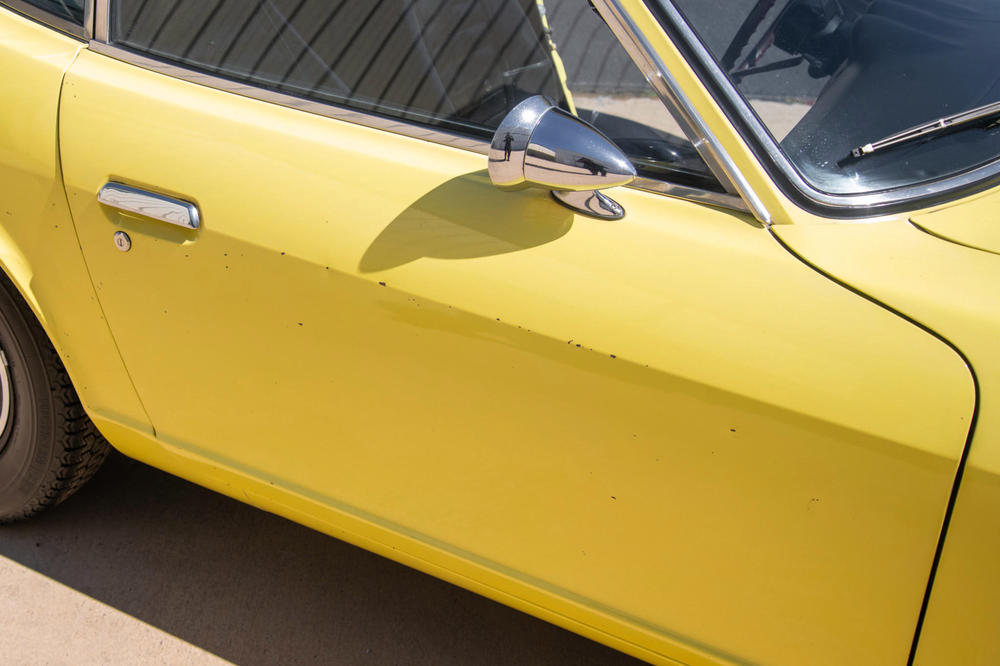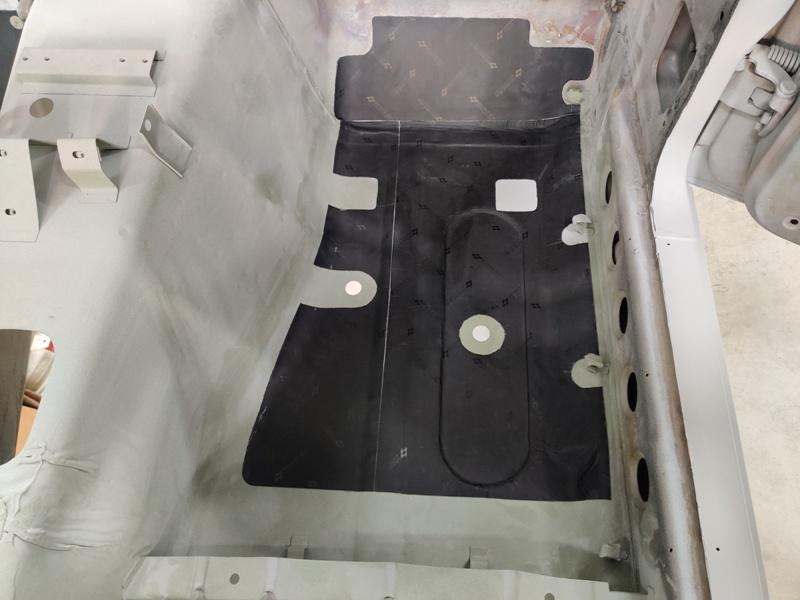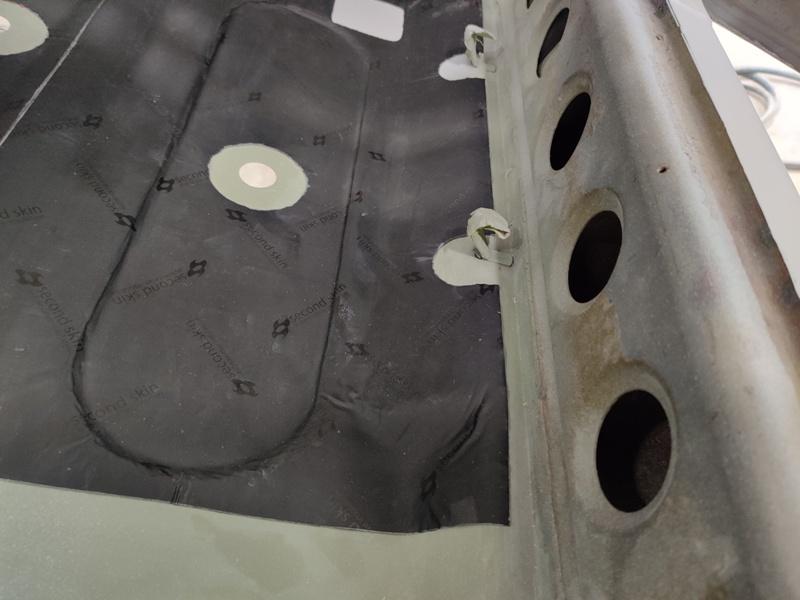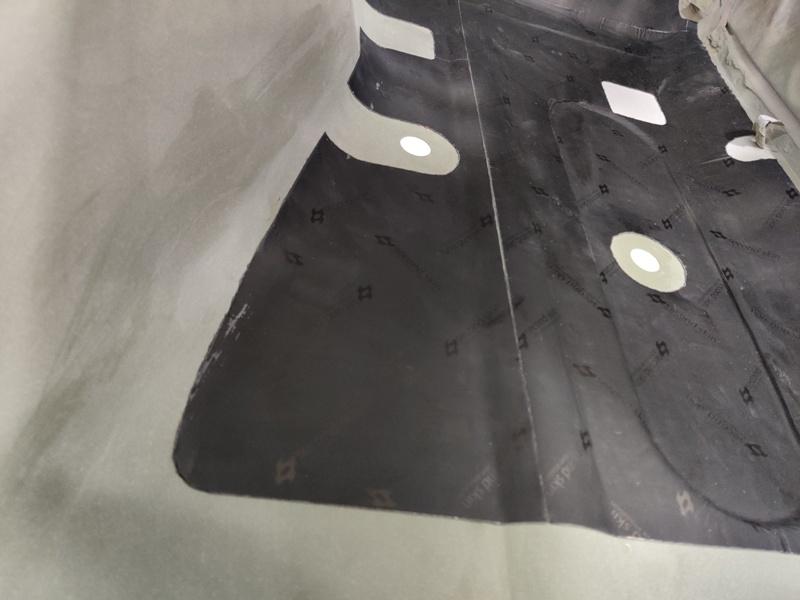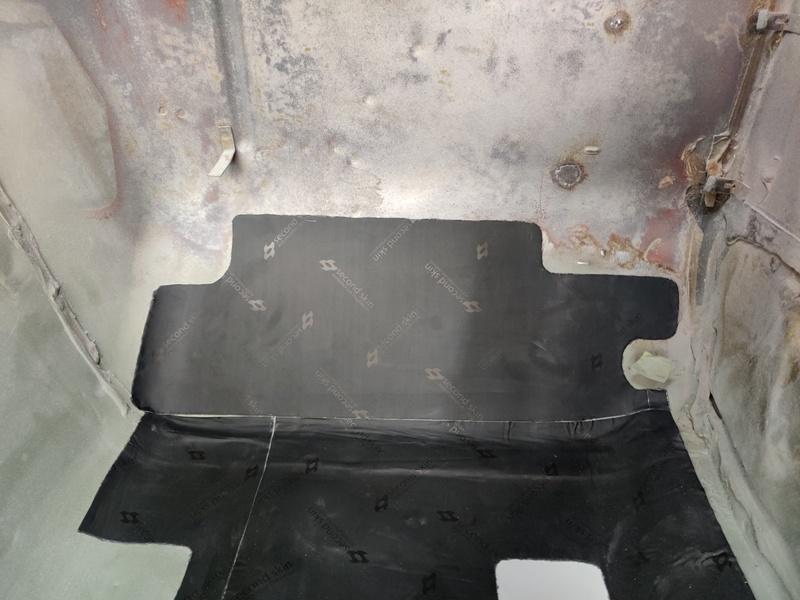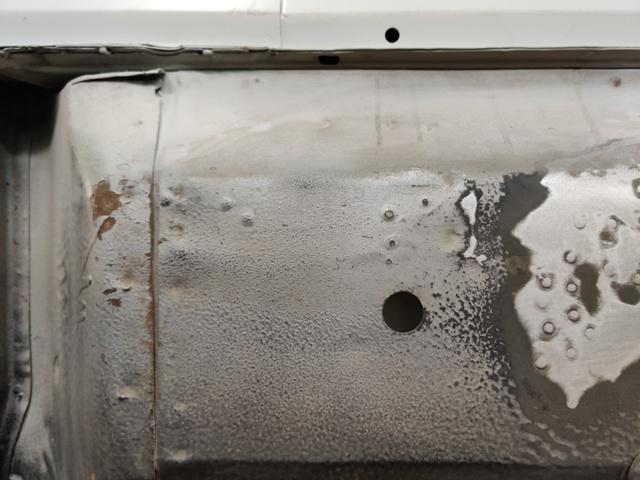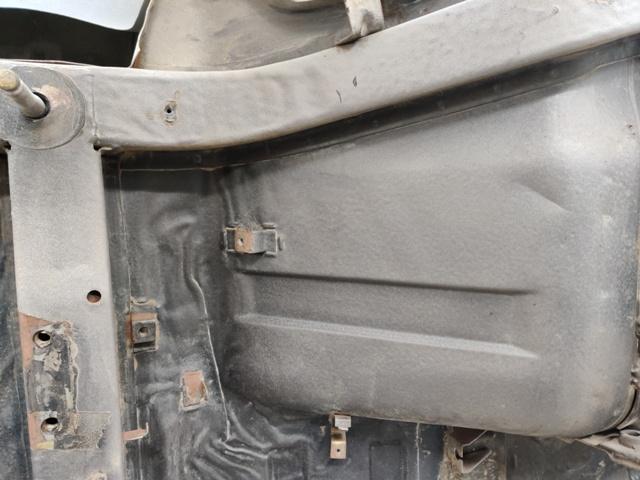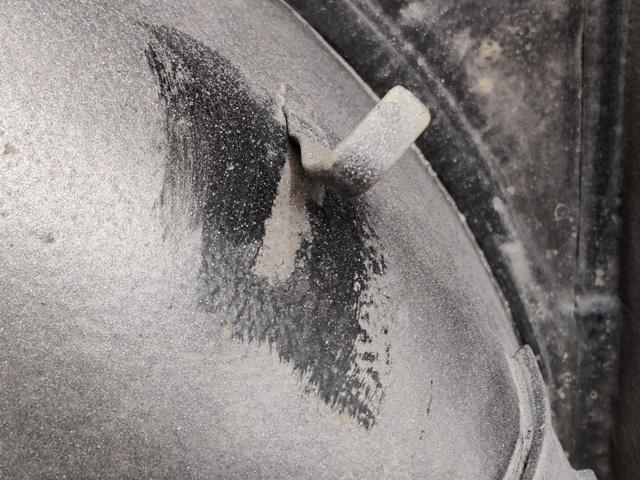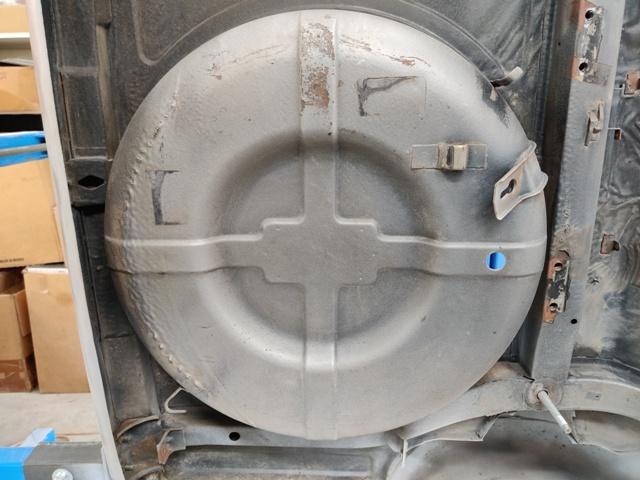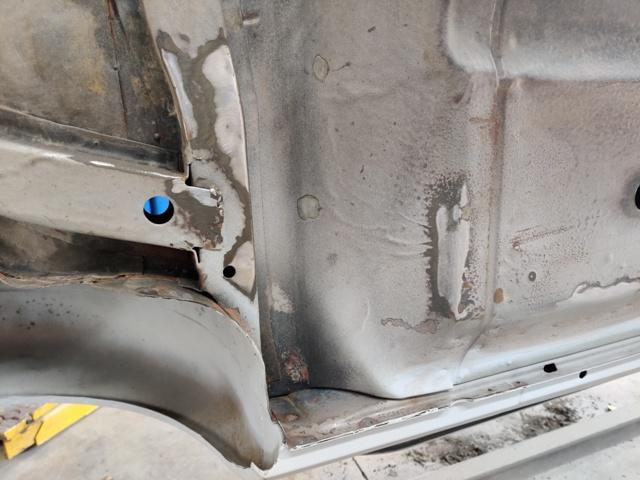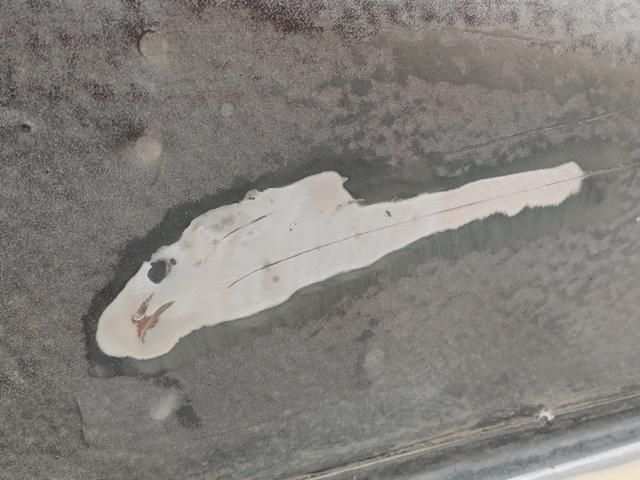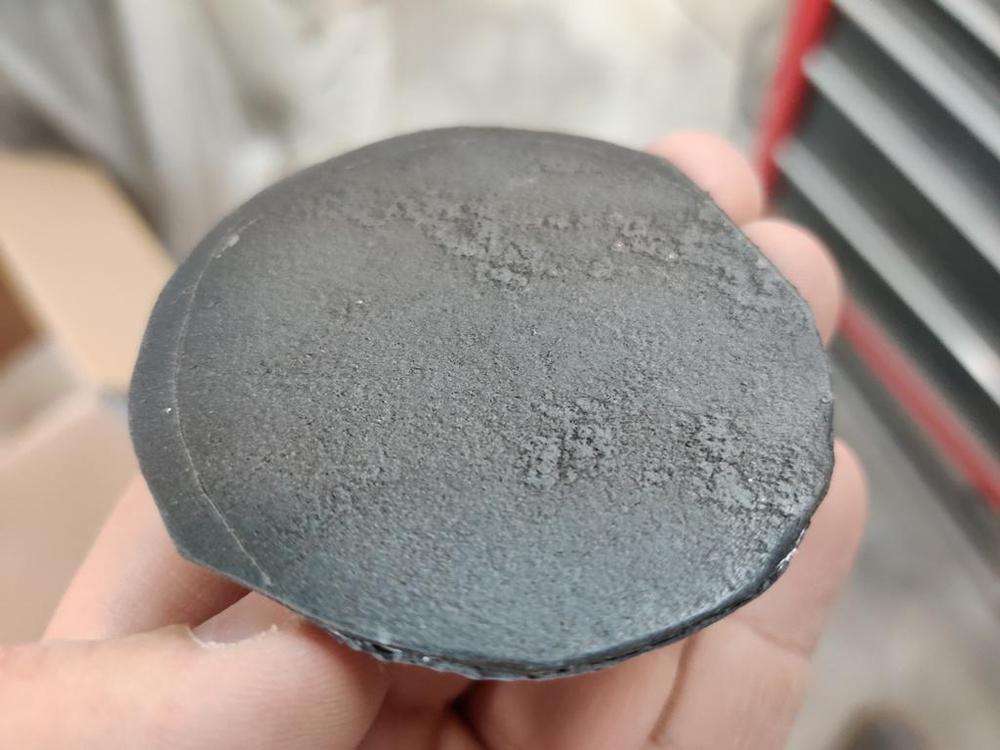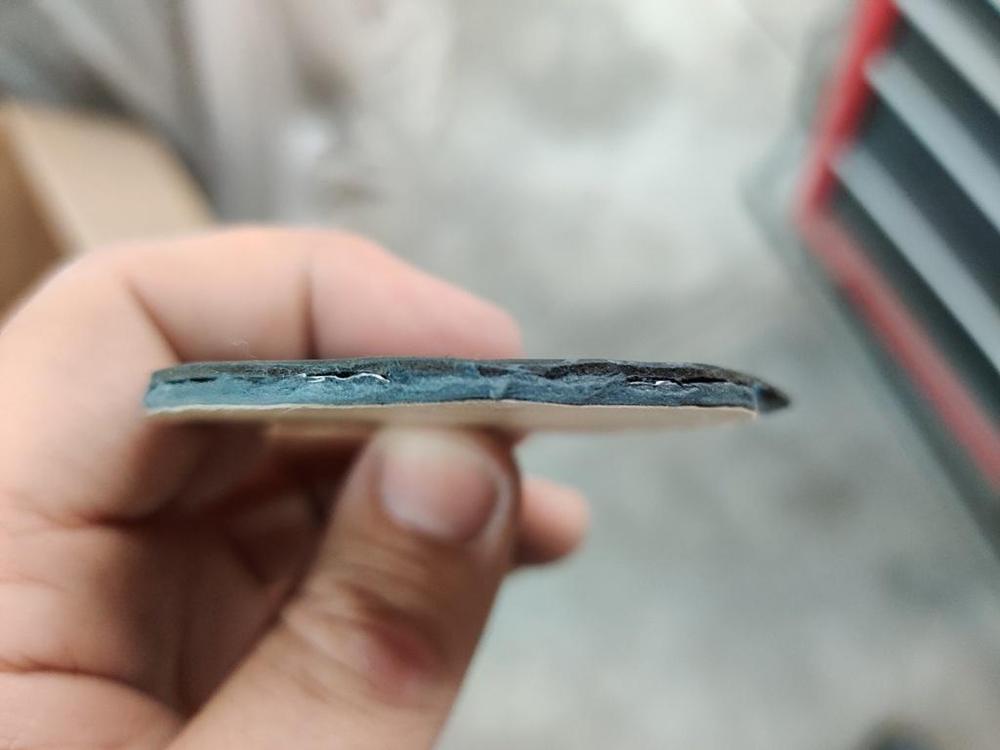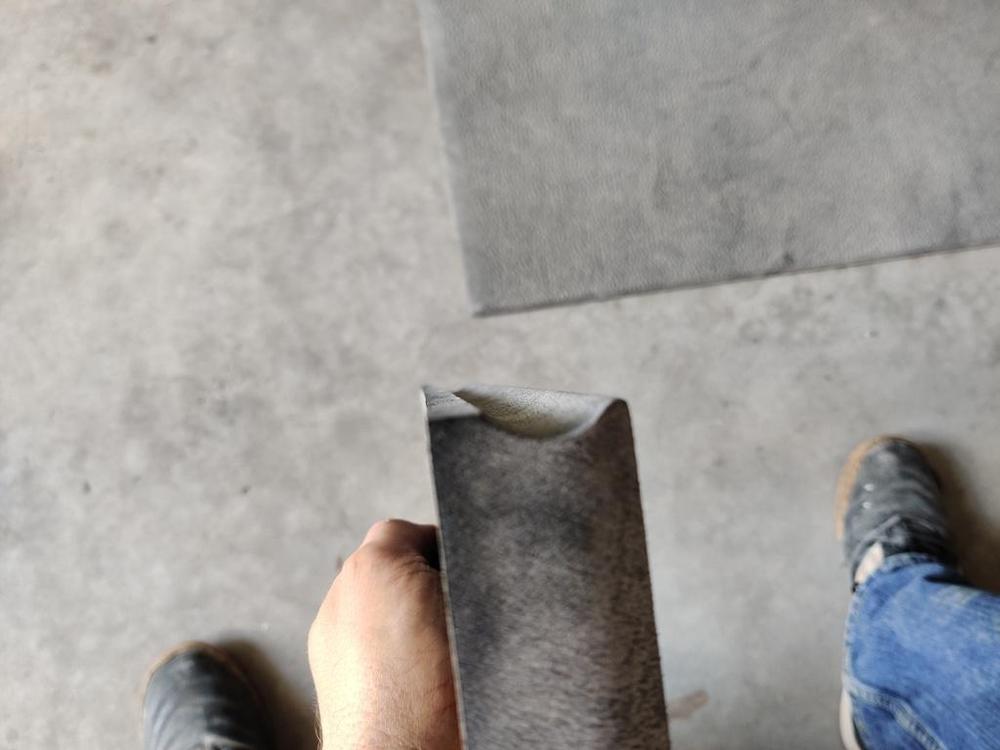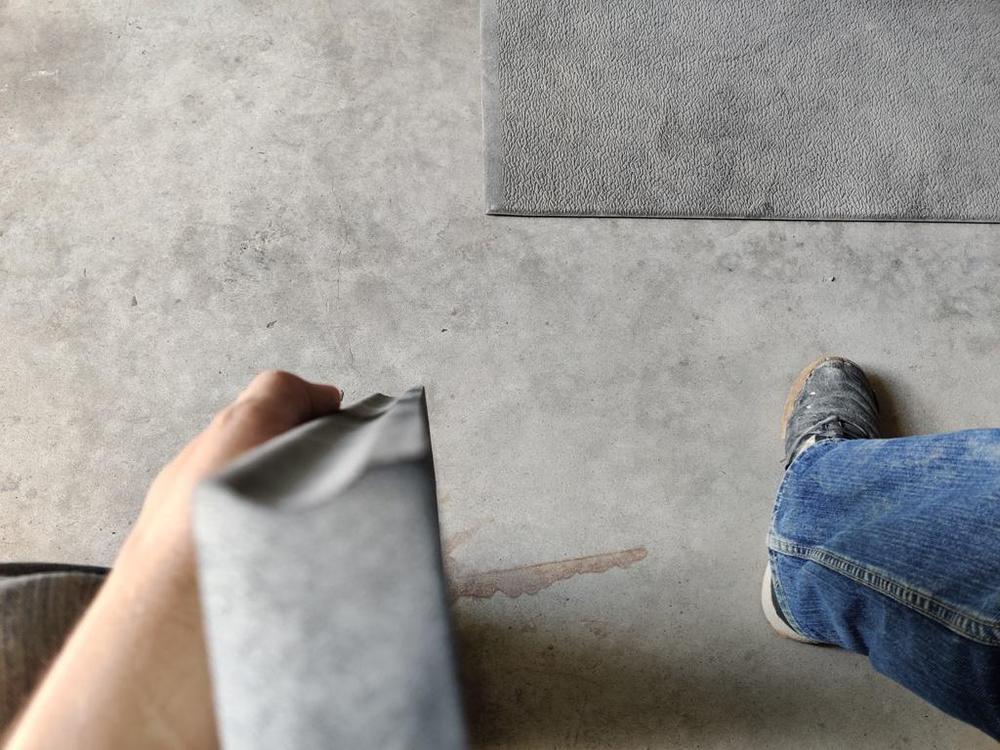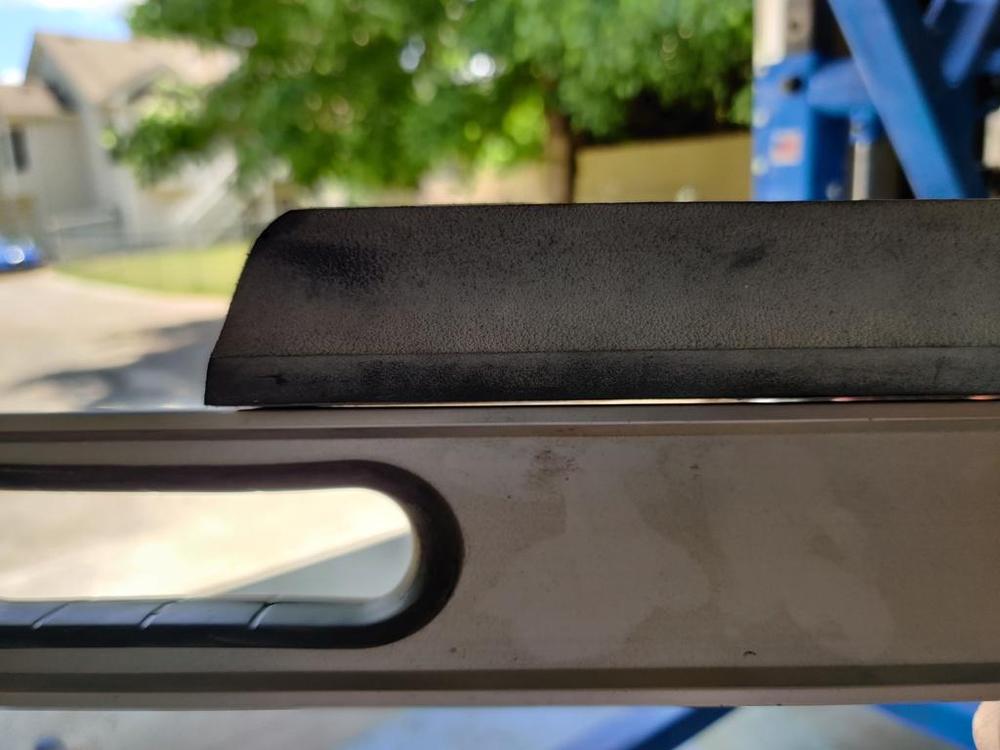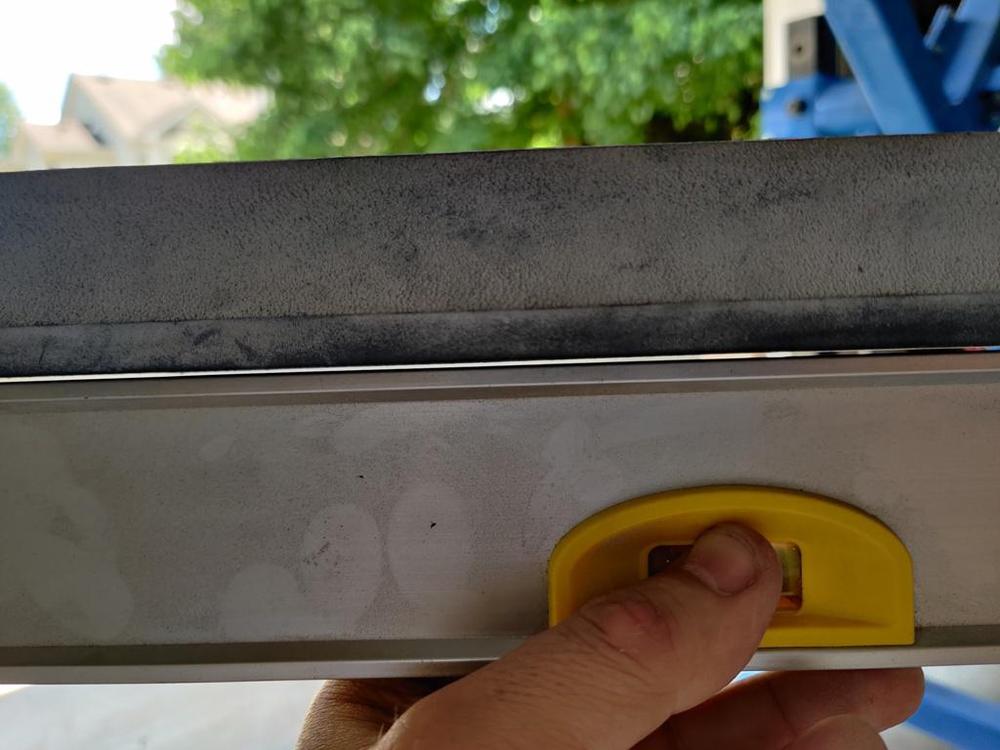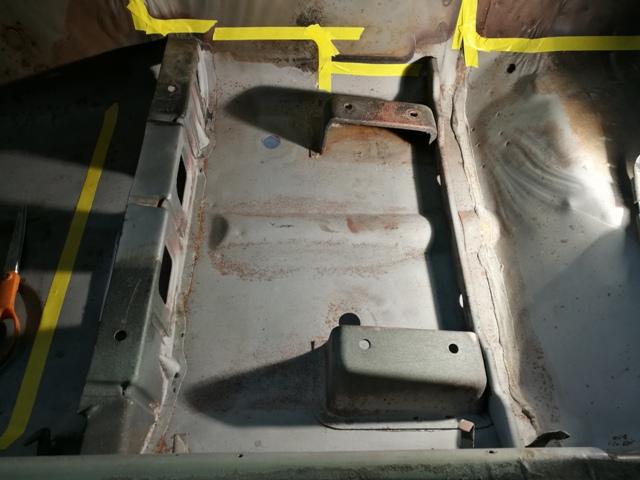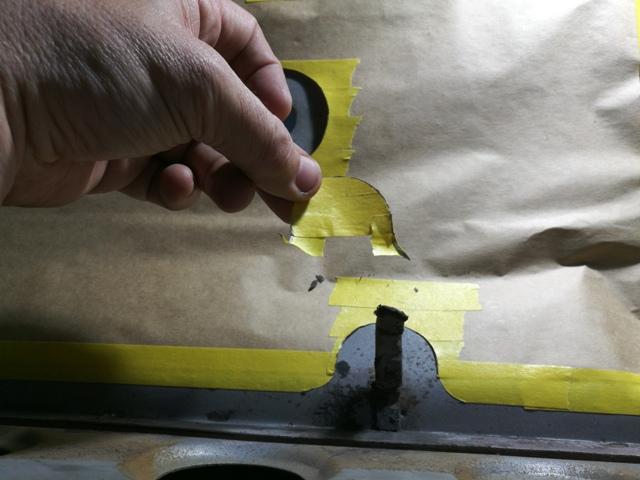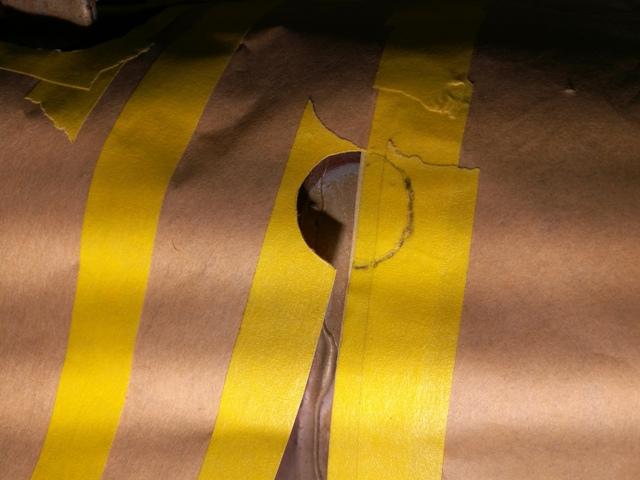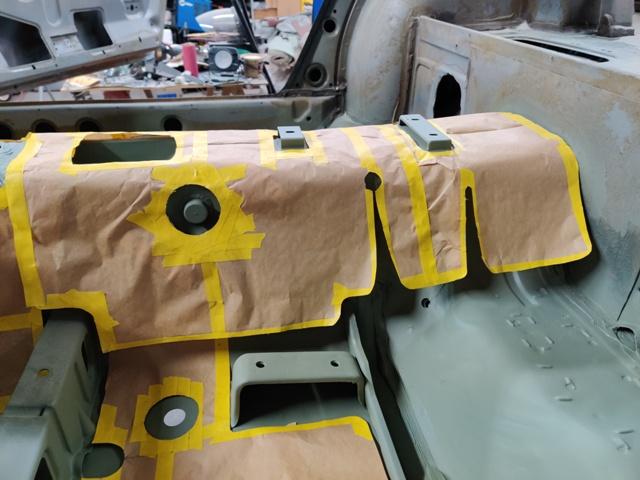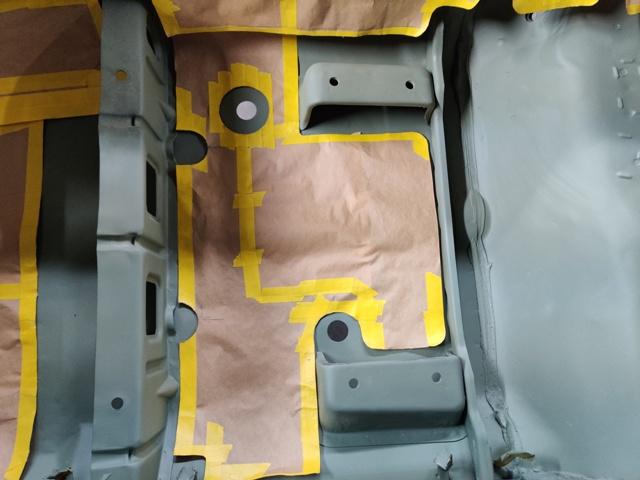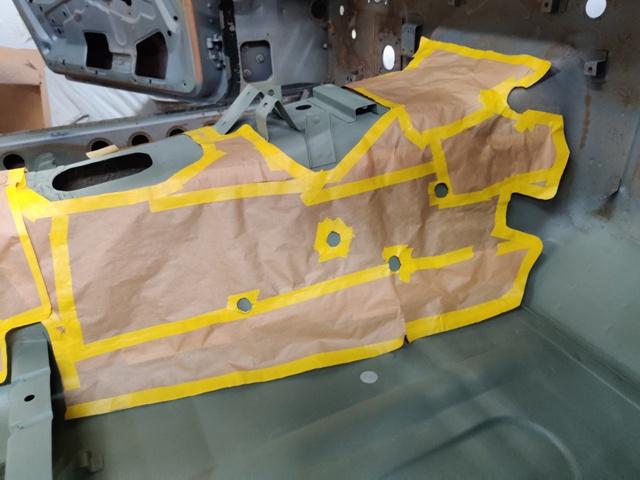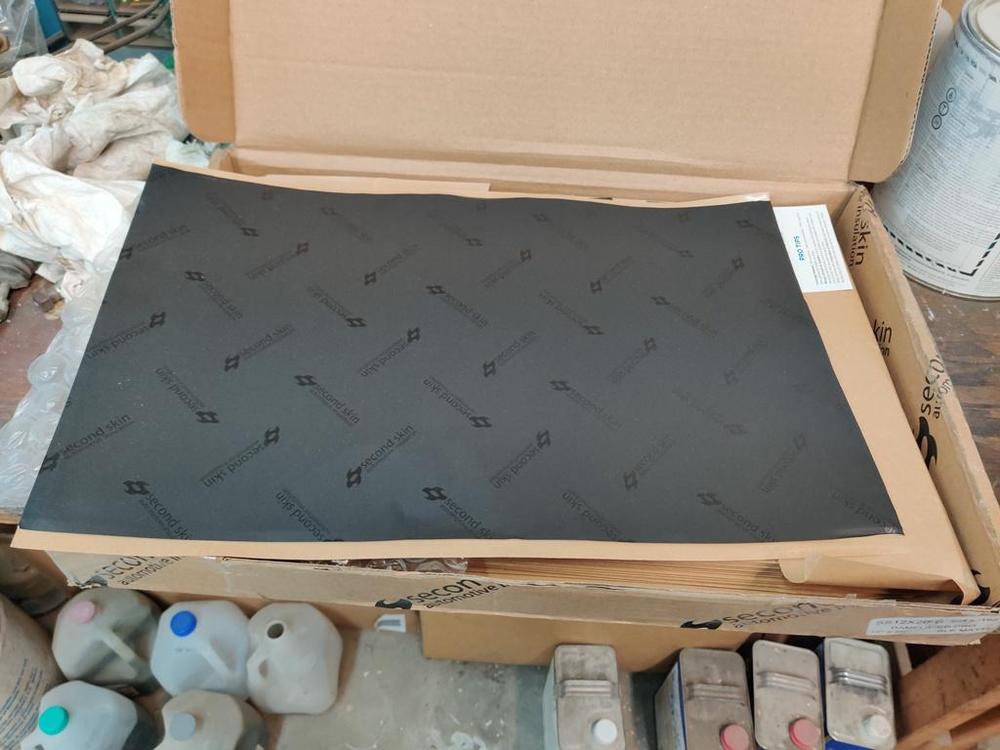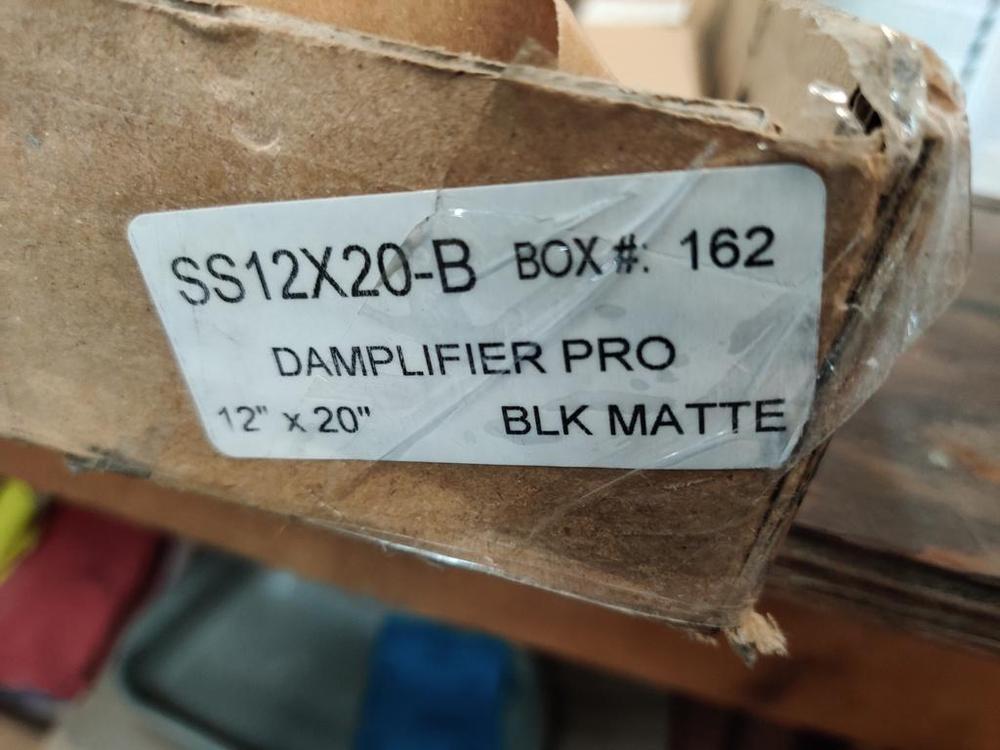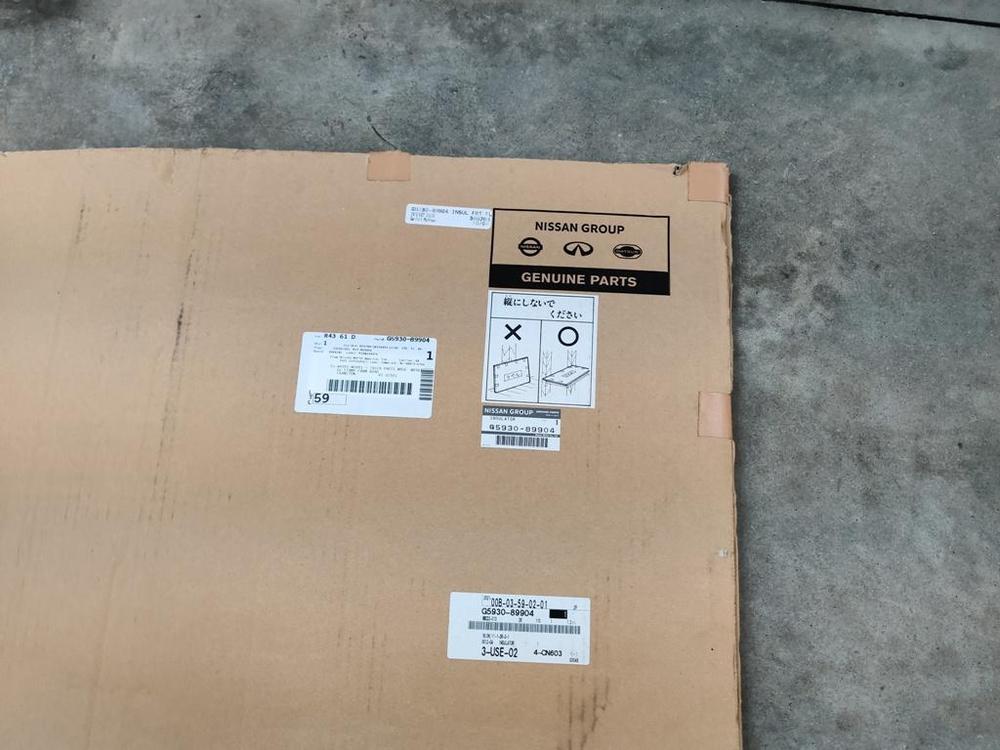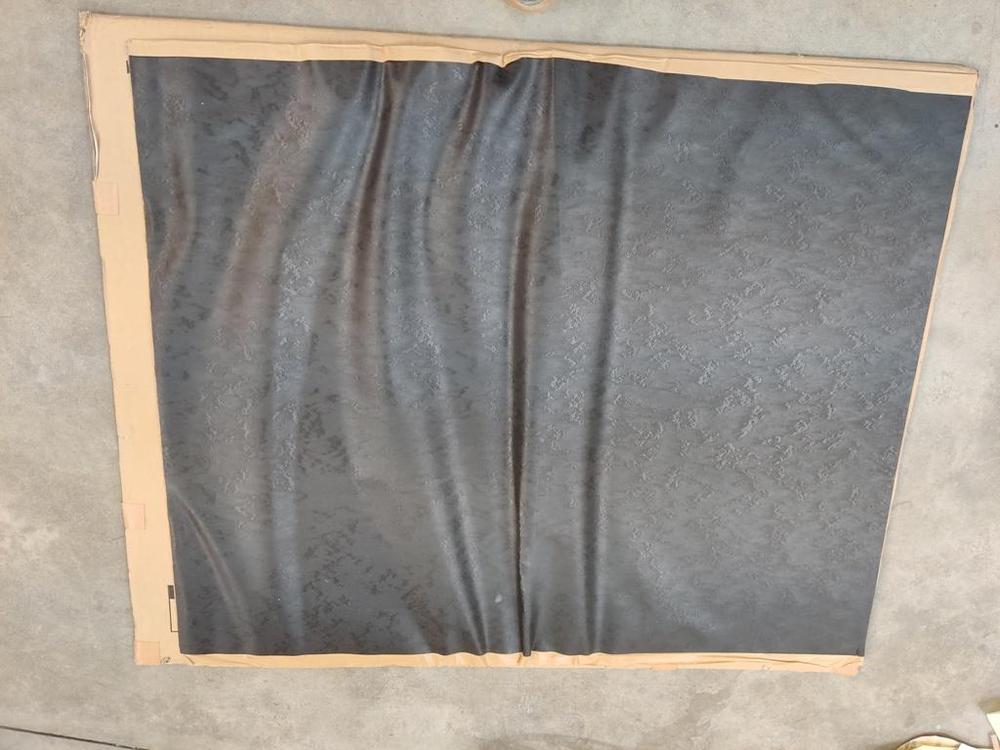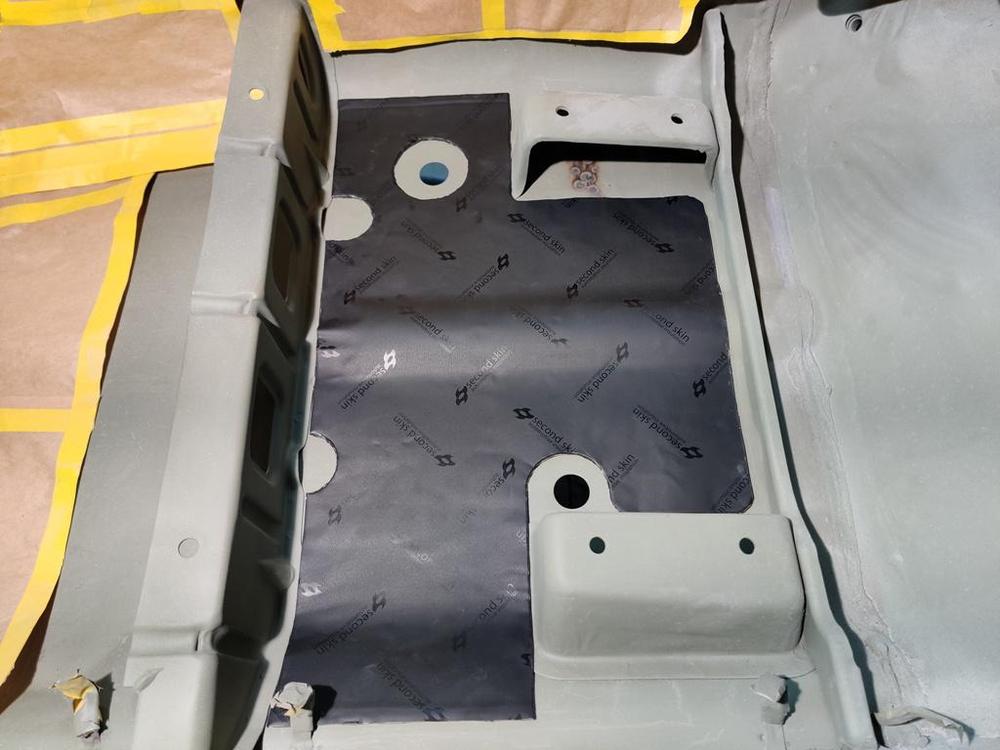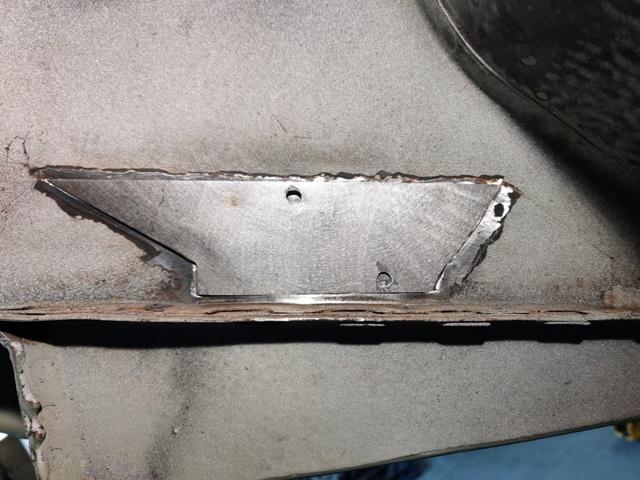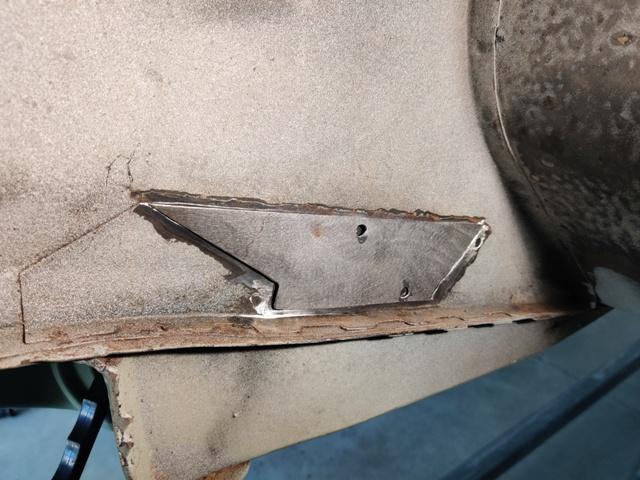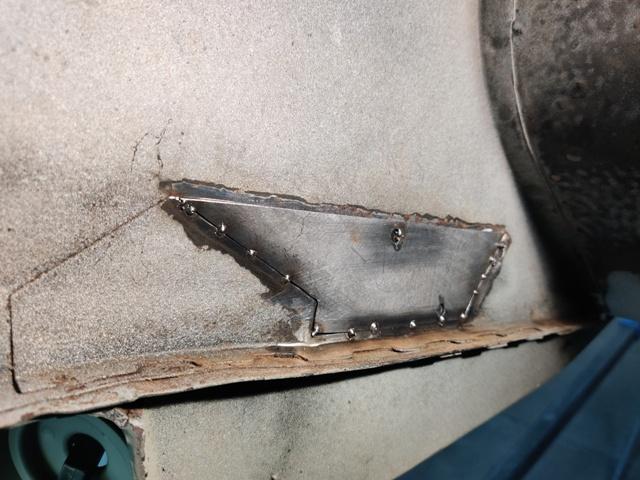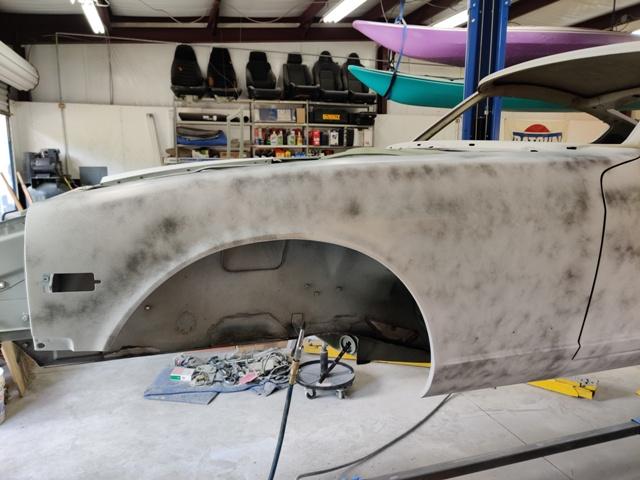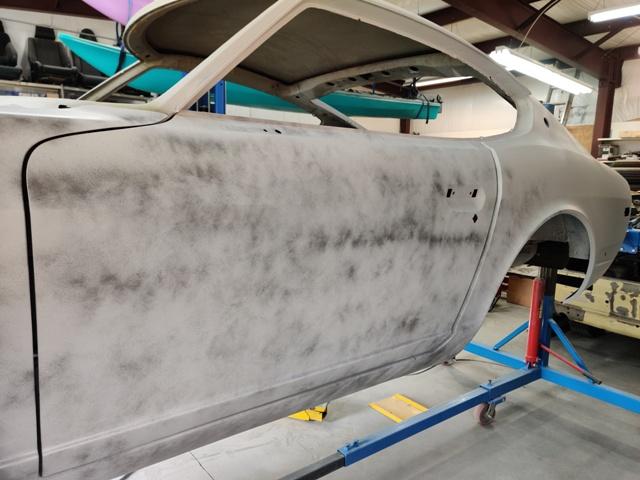Everything posted by inline6
-
Restoration of BringaTrailer 240z - HLS30-35883
Thanks for the tip. Yes, Schutz gun. I run about about 5 feet of clear tube from the gun pickup tube, to another foot long stainless tube that I drop in the container.
-
Restoration of BringaTrailer 240z - HLS30-35883
I found myself with the inspiration to work on the gas tank today. I thought it would be pretty easy to be honest. But, when replacing the brazed on secondary drain plug, I ended up having problems welding one side of my patch panel. The metal was too thin and I kept getting contaminants causing pin holes. After chasing that problem for hours, I ended up cutting another section out and making another patch panel. Both patch panels had compound curves... so they took a while too. After something like 8 hours of work on it, I pretty much got past trying for perfection and made a slight mistake with the alignment of the second patch panel. Anyway, I sealed up the openings in the tank and rubbed soapy water on the repair area while I put compressed air in the tank and after sealing one tiny pin hole, it is finally sealed. Starting point - extra drain plug brazed in place an dented bottom where original drain plug is. Paint removed with high speed angle grinder and red 3M paint removal disc. Interestingly, there is a bright silver coating on the outside surface of the tank that I ground through in places. Must be galvanized from the factory. After using a crow bar tip under the edge of the drain plug to pull it up some (with leverage against wood strip set in place against the tank), I used the stud welder to put pin in low areas. I pulled them with the slide hammer puller carefully. Several rounds of welding pins in place, pulling, and cutting them off were required: Original shape for the most part restored. Next, I progressed to the extra drain plug: I cut it out and made a replacement (compound curve). Unfortunately, many more hours and another patch were required. One edge of the second patch panel is not well aligned with the original tank metal. That is the "line" in the third pic here... because the patch panel is recessed a bit more on that edge. Another angle: It's not perfect, but I am confident that it doesn't have any pin holes. I was able to seal all of the openings in the tank and repeated give it hits of compressed air while rubbing soapy water on the repair area. I did find one pin hole that had to be taken care of, but can find no more. I will test it again before stripping the paint on the outside of the tank and prepping for primer and paint. Wouldn't it be awful if I got it all beautiful and in the car and then found a pin hole??? Yeah - that is what I keep thinking. Going to make sure it is air tight before I go to the next step.
-
Restoration of BringaTrailer 240z - HLS30-35883
While the doors are off, I finished prepping the insides for spray on sound dampening material. I had some sitting in storage for something like 15 years? And I was shocked to open it up and see it was still usable. I don't think this stuff is sold anymore under this name, but I suspect it is the same as the Spectrum product I bought from Second Skin in this second pic. We'll find out soon enough as I spray more of the inner panels of the car. Pictures showing inside of the doors before spraying the sound deadener. I sandblasted a few spots I could reach to get rid of surface rust. Interestingly, there is bare metal that didn't even have full surface rust inside the door: After spraying the sound deadener. When the sound deadener is fully applied to the car and the truck bed liner underneath, it will have substantial reduction in Noise Vibration and Harshness (NVH) compared to stock. The doors will have a very different sound and feel than stock ones. I think it will be quite a noticeable improvement around the whole car.
-
"The Orange"
Exciting stage of the process!
-
Restoration of BringaTrailer 240z - HLS30-35883
I have read/heard the same thing about bondo vs. fiberglass. Since both use the same activator, I would think the resin isn't the part that is susceptible to water, but the other primary material might be the issue. And now searching (via Google), it looks like the other primary ingredient in body filler is clay/talc which absorbs water, whereas fiberglass does not. So, that is the difference. In applications for which I can not be 100% sure that exposure to water is eliminated, I use fiberglass filler. For example, I used a bit in the inside of the dog leg of the quarter panel/rear of the rocker, in an earlier repair, mainly to fill pitting and a few very small holes left after sandblasting prior rust damage. I will attempt to seal the car so water will not get in there ever again, but I used a bit of fiberglass filler there just in case. For repair areas where I am sure water will not ever be present, I use standard body filler. Along that door edge, seam sealer will seal the lap joint of the skin to the frame, primer and paint will seal the outside of the repair, and I will be using a spray on sound deadening coating on the entire interior of the door which will seal the joint on the inside and keep any water away from the area.
-
Restoration of BringaTrailer 240z - HLS30-35883
I rebuilt the door hinges yesterday with new pins and bushings I got off the seller from Malta on eBay. I needed to sand the door frame to prep it for paint also, so the doors came off the car for the first time since I have had it. While off, I will do some light prep to the insides of the doors so that I can spray Spectrum sound deadener in them. I got it directly from the manufacturer. I did this with my other 240z way back and it made a big difference in the sound the door makes when opening and shutting. Just in case I enter the car in shows, that kind of improvement doesn't hurt with judging, right? Hinges as removed - some rust formed between doors and hinge, but not body and hinge. A grey primer was used on the mating surfaces: Note - doors were mounted on the car when it was painted. See lack of paint and factory paint run. Third pic shows back side of my fix to door gap by putting some weld beads along the edge. Some body filler will be used to finish this area on the back side. Old hinge pins and bushings had some wear. I don't know what the old bushings are made out of but they are seem like a "soft" metal. Factory pin securing "roller" has to be removed to replace the main hinge pin. I was surprised at the good condition of it. Lower hinge: Upper hinge: Nearly all the wear occurs on the pin and bushings. The replacement pins and bushings fit very well. Though movement was only slight with the hinges prior to rebuilding for this car, the doors will be not wiggle up and down at all after this fix.
-
Restoration of BringaTrailer 240z - HLS30-35883
Wow! Zilver is super nice. I think for the next steps of sanding, I will use tape in the manner you said. I have been making some progress without, but will need to do that to get it just right. These pics clearly show imperfections, but at least I am getting closer. Guide coat is visible below the belt line... Front left fender... Back of front left fender and front of left door... Left door in front of handle (line is not sharp here)... Above rear wheel well arch (not as defined as it needs to be)... Rear quarter panel... I didn't think that drain was stock, and don't know if it was or wasn't there when I dropped the tank off to have it cleaned out. It had about an inch of goo in it from gas that sat for 25 years. So, maybe they did that to facilitate cleaning it out. Tank is nice otherwise with just a little work needed to straighten out where the original drain plug is. I will cut that additional drain out and weld in a repair section. What brand did you use for undercoats/paint on your car? I thought Glasurit didn't have a base coat in silver for my car, but I figured out that their database is just incorrect. They have 901 silver listed for the 240z, but their year range does not include 1971 (I think it shows 72-74 in their system). They only have the base coat in their 90 line, which is water based. I watched some videos and learned that it is no problem to use that and then follow with any of their solvent based clears. That is a big weight off of my mind, as I was thinking I would have to mix brands and hope for the best - not exactly a risk I want to take after spending some much time and effort on getting the body work right.
-
Restoration of BringaTrailer 240z - HLS30-35883
Anyone ever see this on the 240z gas tanks? A second drain on the corner? I didn't notice it until it came back from the shop that cleaned it out. If not stock, looks like I have another welding project.
-
Underside OEM Finish's
Jim, your car is just like mine. The entire bottom of the car has been coated from the factory with a black "undercoat". I'm not sure what to call it, as it isn't super rough in texture like the later cars. I also think some are referring to it as primer. You can clearly see that it was not sprayed in the area behind the fender that is behind the narrow panel that bolts to the inner fender and seals the back area. There is a little rubber flap attached to the bottom of that panel. If the car was not coated at all, the entire bottom would look like the area in the above pics where the cowl drain tube dumps out. The black coating and lack of texture there is noticeably different. The over spray is on top of the black "undercoat". Keep in mind that when the car was painted with color, all metal and fiberglass body parts (and nothing else) were bolted into place. The headlight opening in the headlight housings is a big hole for paint to come into the front wheel house, which explains the heavy coverage of over spray in that front area.
-
Restoration of BringaTrailer 240z - HLS30-35883
I happened to come across this pic while researching (again) pics of 901 silver. This picture illustrates what I am seeking to avoid the final look of the "belt" line of the car. High resolution pic available: When you examine the body line closely, you can see that it varies both in direction and in sharpness. At its origination point at the fender, it is a bit soft (instead of sharp). As you move your sight from there towards the back of the fender, the line sharpens and then softens at the rear fender edge. Moving onto the door, the first couple inches is soft and actually moved down. Then you can see the line move up and down along the door. That stuff is what I am looking to avoid.
-
Restoration of BringaTrailer 240z - HLS30-35883
Hmmm. Good thought. It might be close. I continued with the sound deadening mat today. Unfortunately, one of my packets of OEM stuff had only one sheet inside instead of two like it was supposed to. Too late to do anything about that, as I have had it for maybe a year now. I will have to order another two pack and hope it is still available. Damplifier Second Skin being installed - seam sealer applied to crevices between individual pieces. I did not use the heat gun for these pieces as they have a thick foil layer on top. I used a roller with a hard rubber wheel to conform the sheets to the metal. OEM bitumen material put on top. You can see the difference as the logos are present on the foil, but obviously not on the OEM stuff. I cut the bitumen about a 1/16" of an inch larger than the pattern which ensures that the piece underneath doesn't show. The bitumen shapes nicely with the heat gun - looks better than the foil with the wrinkles.
-
Restoration of BringaTrailer 240z - HLS30-35883
I find myself looking at certain body lines and wondering exactly how they should look. For example, the "belt" line on the side of the car originates in close proximity to the front fender well. But how close? And how sharp should they be? Consulting earlier pics of fenders in bare metal gives me some idea, but my car had light impact damage to both front fenders that had to be straightened, so, I am not certain. Currently: This original paint car currently on BringaTrailer looks like a good reference car. This pic is a nice one, as the lighting is contrasting the above and below belt line nicely. Also, this area of the A-pillar needs to be done right. Light sand blasting of the original revealed this on the passenger side - the sharp line down the outside of the pillar appears to soften just before the top edge of the passenger fender: How it looks now - but I have seen pictures of other Z's that show this line stays sharper than this. Here are a couple that show this area "ok" (the same car on Bringatrailer.com): Anyone out there have an original paint car and who would be willing to take some detailed pics for me?
-
Restoration of BringaTrailer 240z - HLS30-35883
Nice. Someone should make the templates available on eBay. Mine are kind of "deduced" too much from the old paint lines - the original mats were installed prior to painting the car at the factory. It would be better to have templates made directly from the original bitumen before it is removed.
-
Restoration of BringaTrailer 240z - HLS30-35883
Starting to put in the sound deadening which I cut from the patterns I made. First layer of sound deadening material (standard Second Skin) has been installed on the front floor sections. I did buy the 1 mm version for the floors, so that the thickness after installation of the OEM stuff over top of these pieces will be closer to original: The floor (inside) has been sandblasted, straightened and sprayed with Glasurit 801-703 chromated epoxy primer. I will be applying seam sealer to the edge of this matting (and to the seams/gaps between the individual pieces used) after I install the OEM bitumen material on top. Then I will spray with a coat or two of primer in preparation for paint which will be done by at the same time as the outside of the car (same color). Hope it looks like factory when I am done.
-
Photoshoot of Diseazd 72 Z
Are you at stock height with the car? The ST springs I have will lower it about 1.5 inches I believe. But that is nice to know. Your pics show an incredibly nice paint job in my opinion. I hope the paint on the car I am restoring comes out that nice. I actually decided those would be the wheels I went with a while back, but I keep rethinking. Seems like a very nice wheel especially for the money: Konig Rewind Graphite 16x7 Wheel Kit, 70-85 - four wheels which come with center caps, stems and lug nuts for $474!!!! plus shipping... The Panasports cost $1300 for four plus $110 for shipping and come with center caps and lug nuts. Quite the difference. Glad I bought the Panasport C8's for my track car like 20 years ago - can't imagine what they would cost now. Don't want to jack the thread... again super pics of your Dad's car, Diseazd! Garrett
-
Photoshoot of Diseazd 72 Z
Nice pics! Nice car! Are those 16 X 7 wheels? What size tire? I was told by ZcarSource today that those wheels would likely require fender rolling. I am planning to run Suspension Techniques blue springs and didn't even begin to think Panasport 16 X 7's would rub. Appreciate any insight you can provide there.
-
It's come a LONG way...
Looks great! That silver looks more original to me than most. Do you know the paint brand that was used? And would you be able to get the code for that manfacturer's 901 silver?
-
Restoration of BringaTrailer 240z - HLS30-35883
Almost a month since my last post - lots more hours on weekends and some weeknights as well have been spent. My body work videos aren't very exciting. I just can't seem to get the motivation to set up a tri-pod and show work being done. Video editing will be a necessity in the near future. For now, I have these raw videos I uploaded. Before spraying: https://youtu.be/CGWh34rB_uE After primer has been applied: https://youtu.be/qJSDRZAOv-U It is astonishing how not flat the panels were before I switched over to a very straight and rigid sanding block. A huge number of hours later, I have sanded the entire car again, applied and sanded more body filler (premium, light weight), and applied seam sealer in most external body seams, and started in underneath seams as well.
-
Underside OEM Finish's
I am restoring a 240z I purchased on Bringatrailer.com. Here is the auction I won. And I have been pretty active with updating a build thead here on this site. Lots of pics and detail showing the work involved. Regarding the plan for undercoat, I spent a lot of time looking for options and think I can do a decent job of replicating the original undercoat texture. Most truck bed coatings have too rough of a texture. Most undercoats have tar in them, which the original coating does not have. Most paints are too thin. I found a truck bed liner (Raptor Liner) that looks close, and I plan to experiment with replicating the settings and application technique used by the Gunman in this video. If you jump to 21:55, you can see a couple quick close ups of the finished texture. Still a bit course, but close. I also got a Raptor liner kit that came with a variable nozzle gun. This allows you to alter the spray and texture achieved, so I will experiment with that as well. I have also seen that some people buy a $10 harbor freight hvlp gun and drill it out to 2mm - this can produce an even finer finish. Depending on how my experiments go, I may buy that and experiment with it as well. I think I am getting close to the time to spray the undercoat. I want to put the last of the primer coats on the body so I don't have to tape up/cover the bottom of the car. I don't want to get primer over spray on the undercoat. However, I do want to get paint over spray on the undercoat - hopefully just like the factory! I will need to work with the painter to get that close, hopefully. Basically, it looks like that involves painting most of the wheel wells, front and rear. And, hitting the floor pretty good along the outer sides... and blending toward the center. I will attempt to replicate the over spray on the spare tire well too. Part of me wants to paint the bottom of the car like the Franklin Mint 240z, but I will try to be more faithful to the original look. Garrett
-
Underside OEM Finish's
My 6/71 and 12/70 both have the same black "undercoat" which was liberally covered in overspray. The coating is quite tough. It is not tar based at all, but more like a truck bed liner material, believe it or not. The texture is not as rough as typical truck bed liners. The thickness is something like 1mm as a best guess. On impact areas of my car, I have been using 80 grit on a DA to feather edge, sanding to bare metal while feather edging. There is no primer on the bottom of the car. Just this stuff. Least amount of overspray is in the tunnel. All four wheel wells appear to be intentionally sprayed with color. Car is silver - hear are some pics: In some areas such as the back of the spare tire well, they really loaded it on causing runs... No primer underneath this stuff, at least on the bottom of the car. Front wheel wells may have primer under the "undercoat":
-
Parts Wanted: Need 240z Windshield - without blue tint
View Advert Need 240z Windshield - without blue tint I am looking for as high a quality and as nice a condition windshield as I can get my hands on for the car I am restoring. I am not interested in the new ones from Motorsport or the new one's on eBay - the ones with the blue strip of tint along the top border. Also, I am not interested in settling yet for one that has high miles and lots of "sand pitting". Anyone holding onto a really nice spare that when you really think about it, you aren't going to end up using after all? Willing to pay top dollar for the right one. Garrett Advertiser inline6 Date 06/20/2020 Price $500.00 Category Parts Wanted Year 1971 Model 240z
-
Restoration of BringaTrailer 240z - HLS30-35883
Thanks for that info! Now, I need to decide between going with stacking what I've got (and ending up at .150" thick), or maybe buying some regular Damplifier (.040" thick instead of .080" thick) and then covering that with the OEM stuff for the floor panels... That would put me around .110" thick.
-
Restoration of BringaTrailer 240z - HLS30-35883
Tonight I cut a matching piece for under the passenger side seat. And I experimented with stacking the OEM bitumen on top of a piece of scrap of the second skin material. I think this will work nicely for the tunnel and maybe the floor as well. First, I like that the aluminum foil gets completely covered, and that the OEM piece really looks like the original mat. Second, the thickness of the two stacked is "close" to my original mat that was on the tunnel. The original pieces vary in thickness a bit, but around .130" is close. The stacked pieces are right at about .150". Original scrap from the tunnel: Also, the OEM sheets are pretty large, so for the bigger pieces, I will be able to cover up some of the joints between sided by side pieces of the Second Skin Damplifier Pro. And one would have to assume that the damping will be even more with stacked pieces, but I don't care so much about that part. I don't have any pieces of scrap from the floors, so I don't know the original thickness there. Anyone know?
-
Restoration of BringaTrailer 240z - HLS30-35883
I am again reminded how how inefficient I am at doing high quality bodywork. I am now on my third "last" application of high build primer. I am obviously repeating this process too much. I don't know how many coats I have put on the body now. If I had to guess, I am at like... a coat of epoxy primer, a layer of body filler, (then a round of sanding), another coat of epoxy primer, more body filler, (another round of sanding), two full coats of high solids primer, (more sanding), spot primer in low areas along with another 2 full coats of primer on the body (5 coats in areas), (yet another round of sanding), and now, two more full coats of primer with certain low spots getting a total of 4 more coats. I have run out of my gallon of HS primer. A gallon without hardener costs $360. So... this is a very expensive way to build up low spots. Take my own advice. Apply as skim coat of bondo to the whole panel and then sand it down one time. Apply several coats of high build primer, and then guide coat and sand that to perfection. This will save you massive amounts of time and money. And again, I will certainly experiment with spray filler with the next time I do a full respray on an old project car. With all that said, I have learned a couple of things that might be helpful to others. First, I can now say from an experienced standpoint, don't use commercially available sanding blocks as they come straight out of the box. I have bought several, and most of them have needed to have their sanding surfaces "trued". Take a look at this Durablock, for example: Hard to see from those angles... but here it is on a long level: Durablocks are "pretty firm", but they are also easily bent with standard sanding pressure. So, you can imagine how flat your panel would not get when using this. With light pressure, it sand with more pressure at each end. Hard pressure will allow it to conform a bit to the panel's existing surface. Softer foams are even more problematic. They can be useful in various contours, but they should not be used on large flat areas, not if you are trying for perfection. For those areas, use rigid sanding blocks. A block of wood that has been sanded flat is a great choice! Switching gears a little bit, (I find it best to rest my shoulders, elbows, and hands after 17 hours of sanding time over two days of the weekend), it is about time to put the new sound deadening mat in. I have choices! Not sure how I will proceed just yet. I don't think I have yet shared the pics showing my template creation. When I bought the car, the tar mat was gone from the floor surfaces and almost half of the tunnel. I spent many hours marking off lines (based on paint lines and existing tar mat pieces). As the tar mats are applied from the factory before primer and paint, some of the pattern was easily determined by looking at where there was over spray and where there was not. Other than those two things, I stared at pics online to determine the shape in areas I could not decipher. The templates are made from masking paper and masking tape. Regarding sound deadening, I originally planned to put the OEM stuff that I was able to source, but it is only about .060" thick. The original bits I have (mostly from the tunnel) are more like .130" thick. So, I could try to double up (I have four sheets like the OEM one pictured, which should lay down flat and be usable after sitting in the sun for a bit. However, being that we are now 50 years later than the original build date, there is some stuff on the market now like Damplifier Pro. It is a butyl rubber product (no asphalt - and not bitumen) with a thick piece of aluminum foil on the top. It would be far better for sound dampening and for heat insulation. I used my template and cut one piece for under the driver seat. It is not glued in place yet however. I will think on how to proceed some more.
-
Restoration of BringaTrailer 240z - HLS30-35883
I found a bit more rust that needed to be taken care of. These "reinforcement" plates above the compression rod box are not sealed well from the factory. Water coming down the inner wheel well goes in between the plate in the inner fender and sits. This is the driver side. I cut away the rotten portion. In the first pic, the rectangular section in the middle that has a different sheen is a sectioned replacement. I just didn't show the work involved with that. The inner fender panel had a couple of tiny perforations from rust, so I replaced this small area. I then used a small hand held belt sander to clear away the surface rust from the remainder of the repair area and fabricated a new panel. Extra effort to clean all the sheet metal very well makes welding much easier and the outcome better. I *think* this is the last of the metal work! Holes drilled in replacement are the factory spot weld locations. Sanding of the high build primer is ongoing. Here are a couple of pics showing guide coat. I am just using black spray enamel. I'd say it is going well, but unfortunately, I will need to apply some more high build primer. I will get some pics up soon that show how the sanding is going. Maybe some video as well of sanding guide coat.




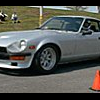
 Subscriber
Subscriber

